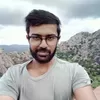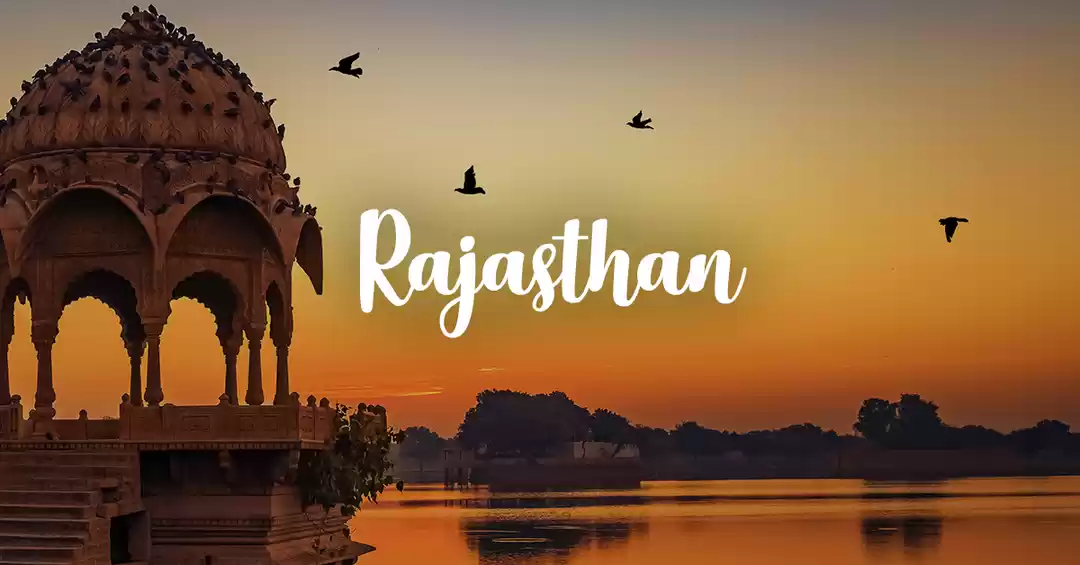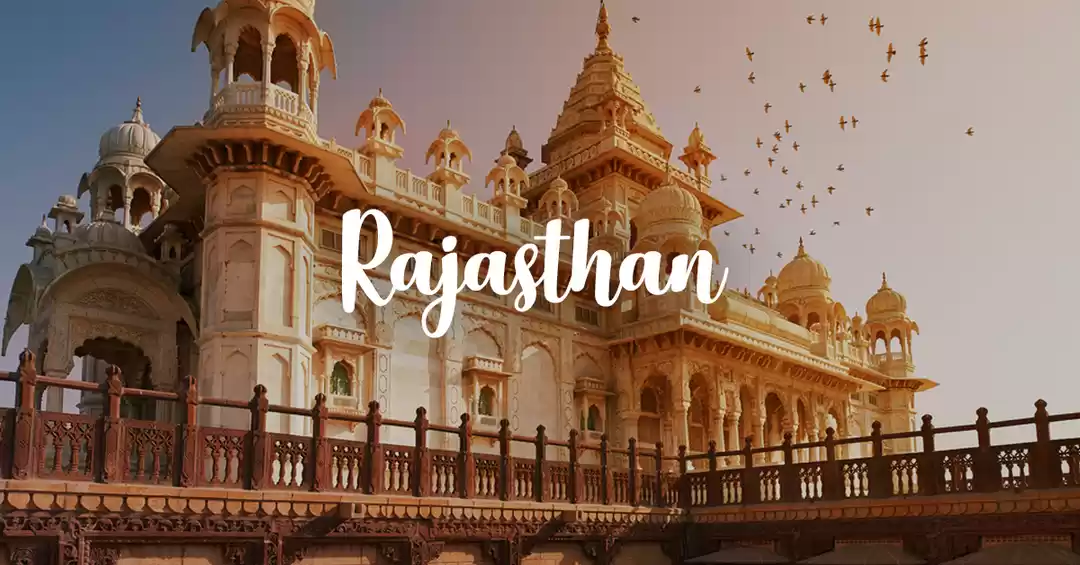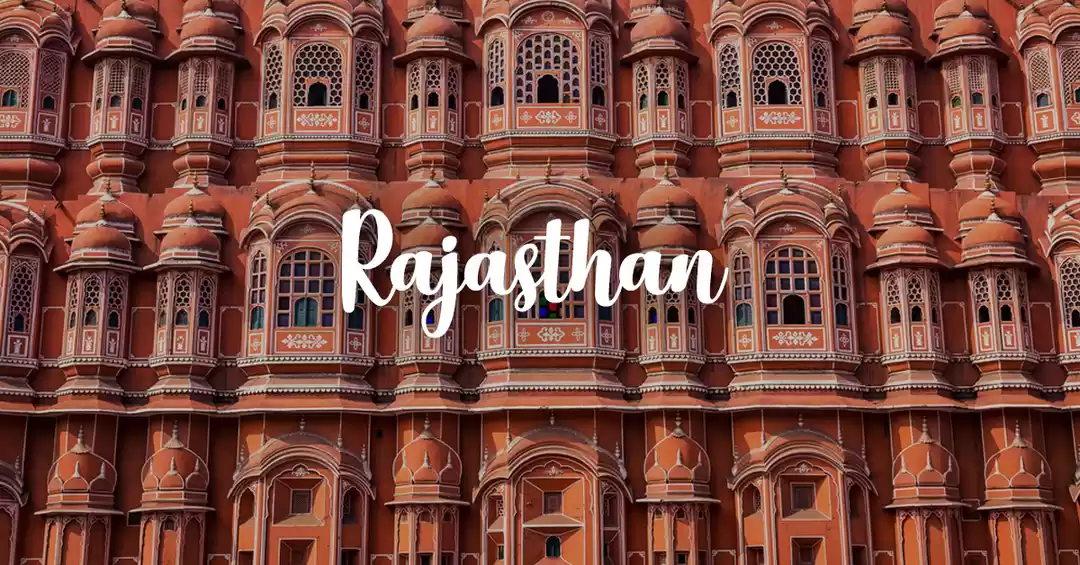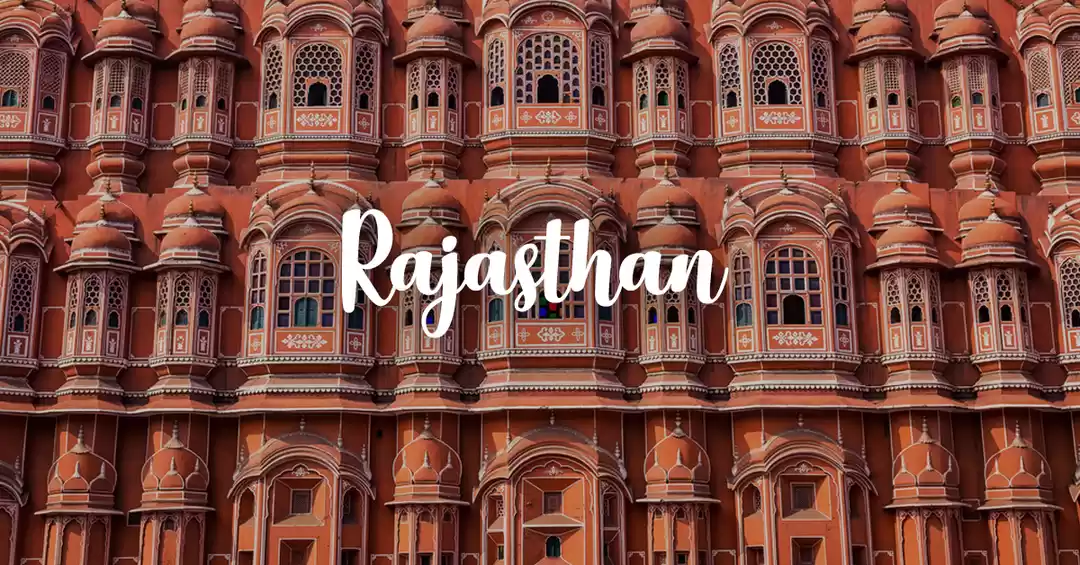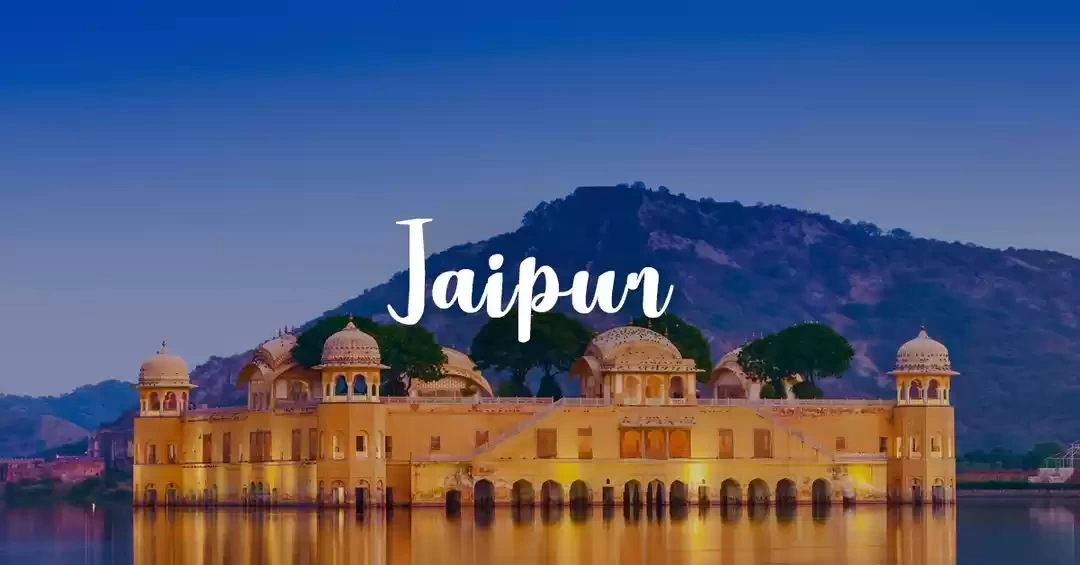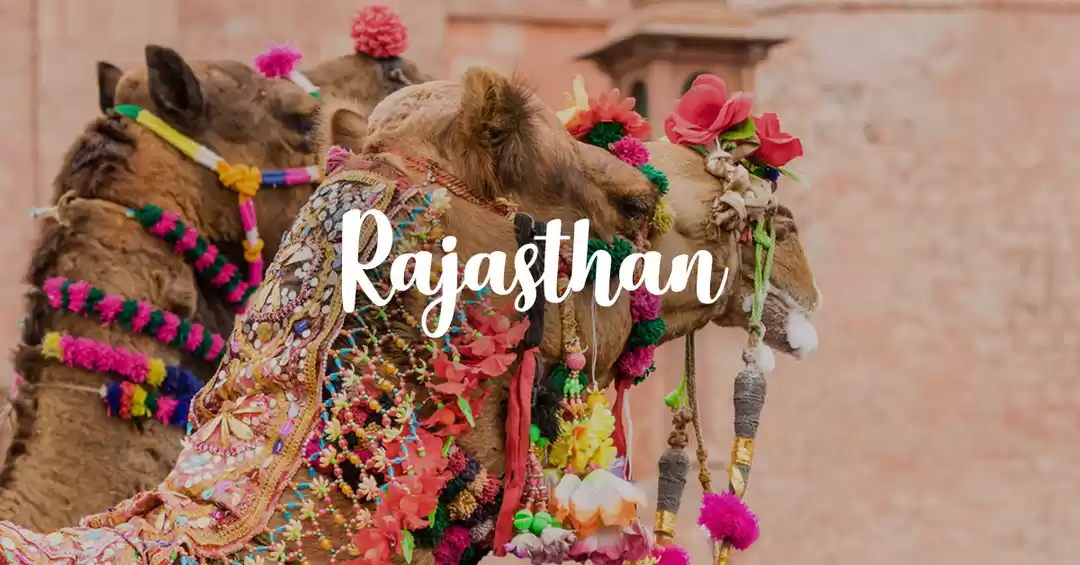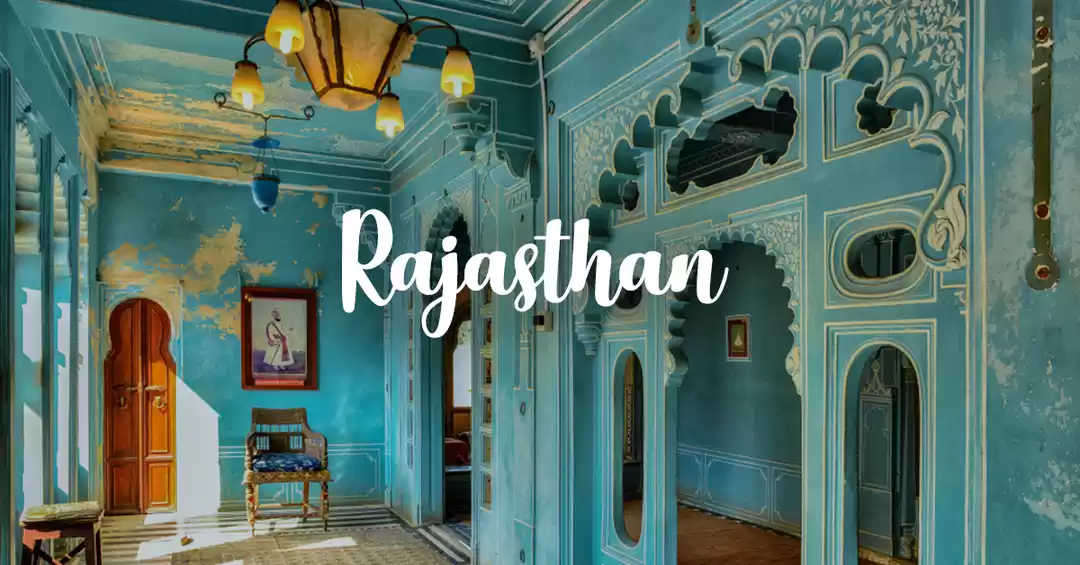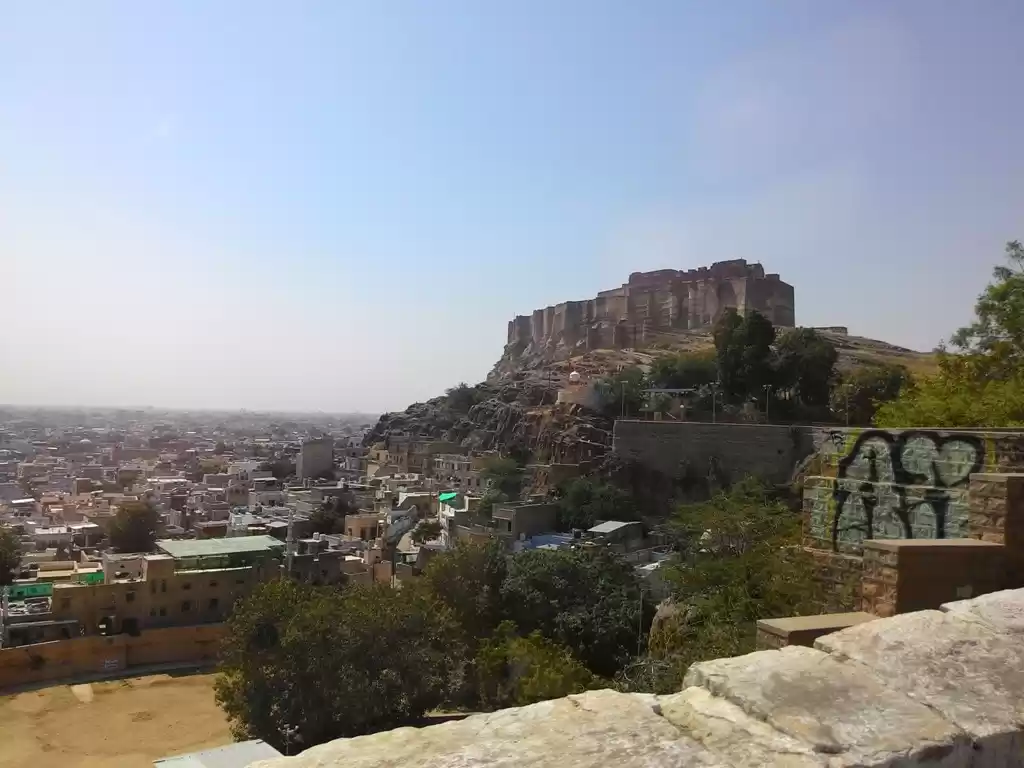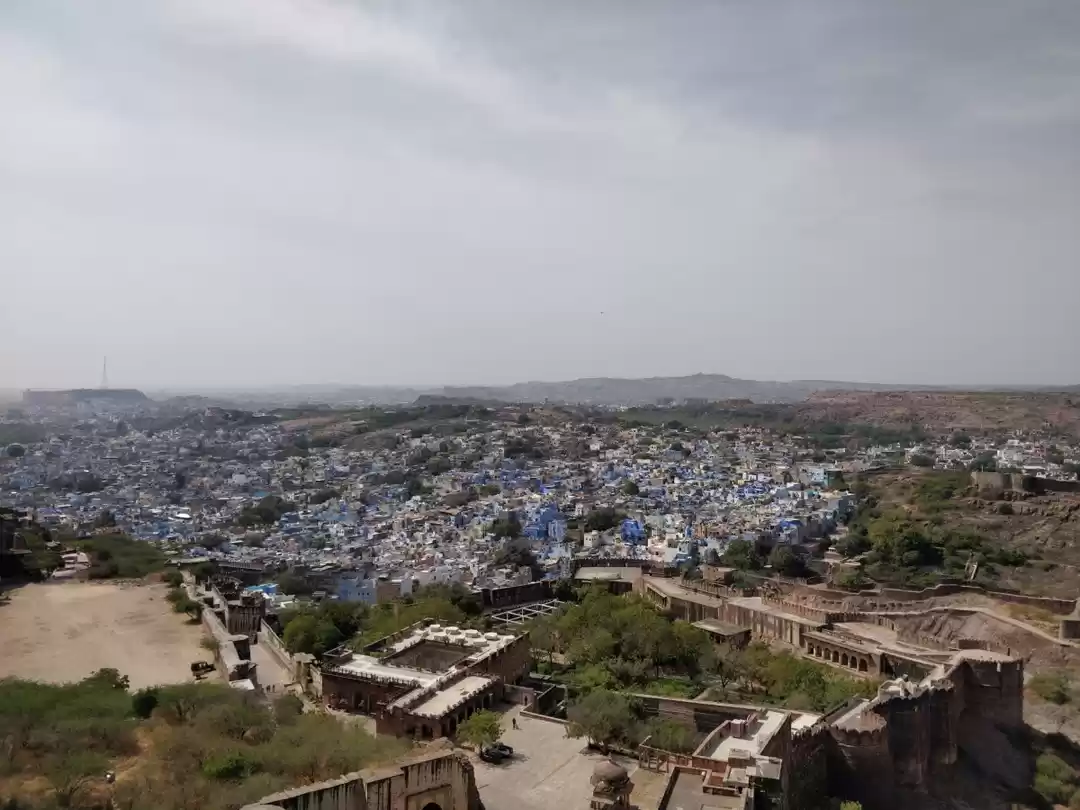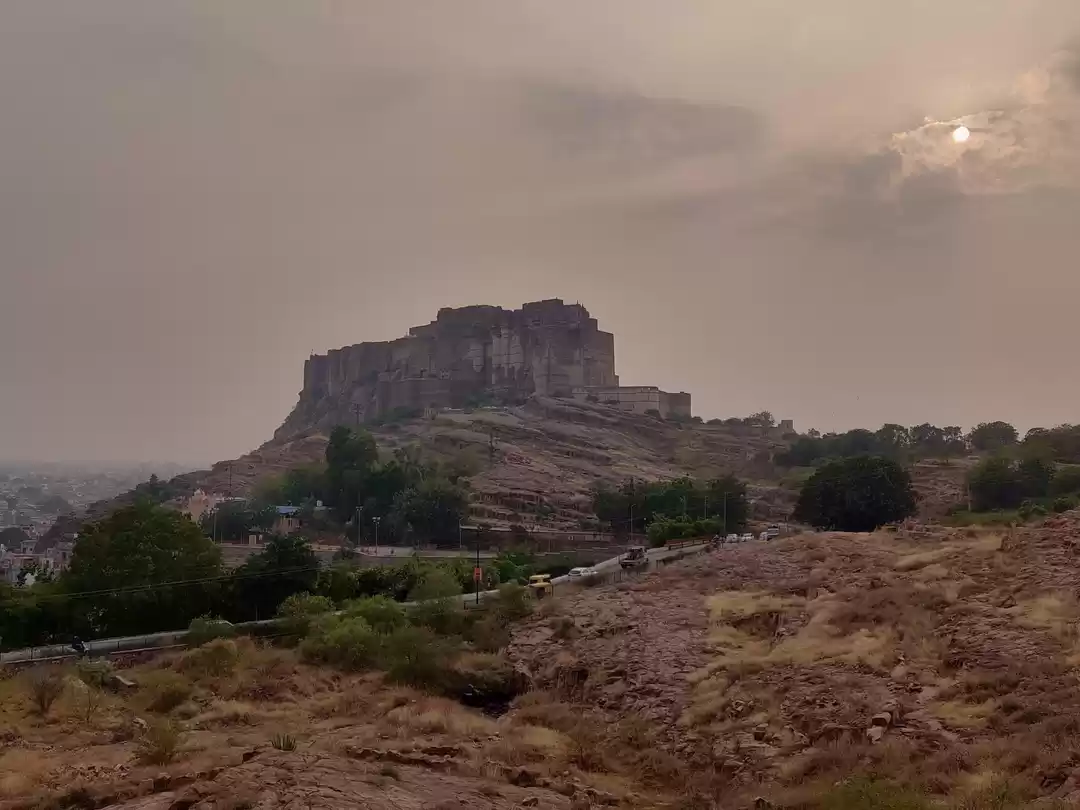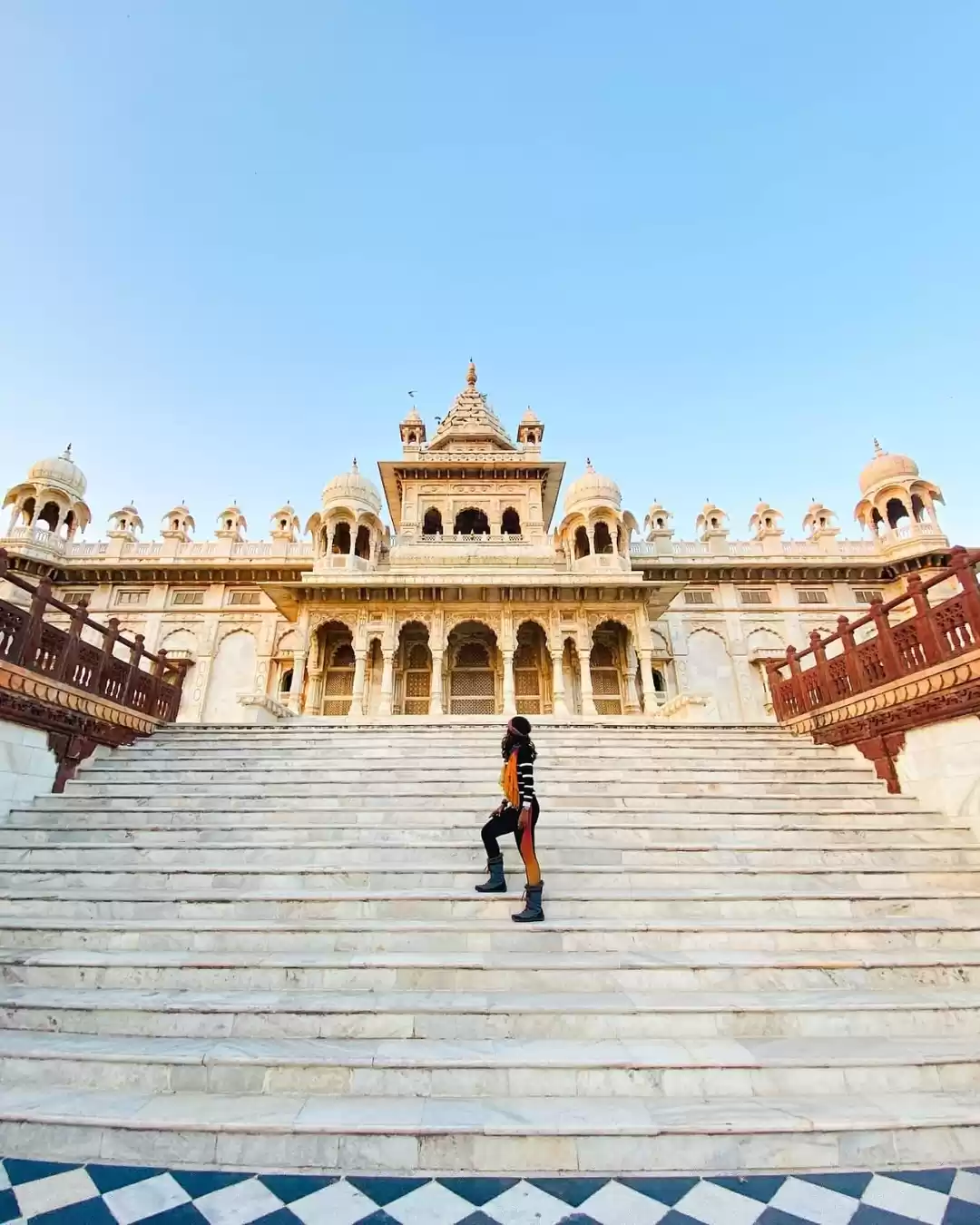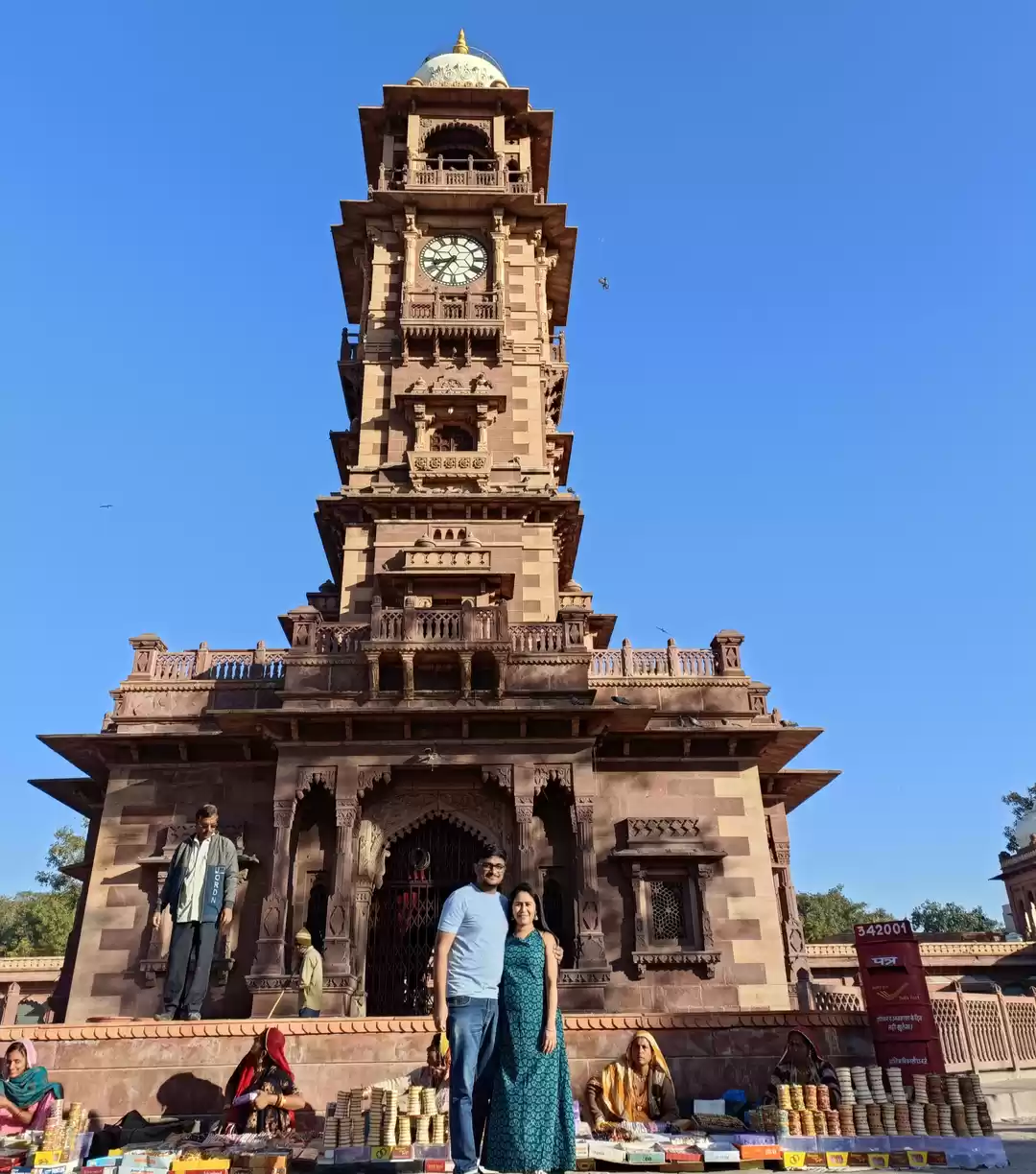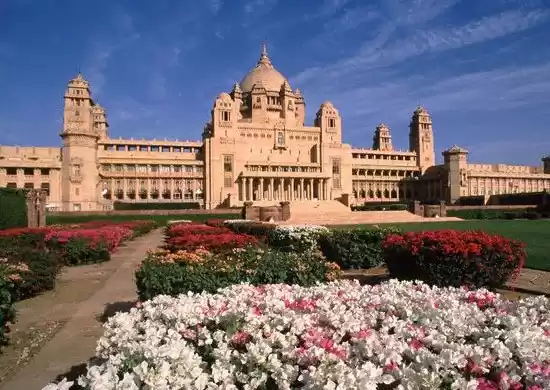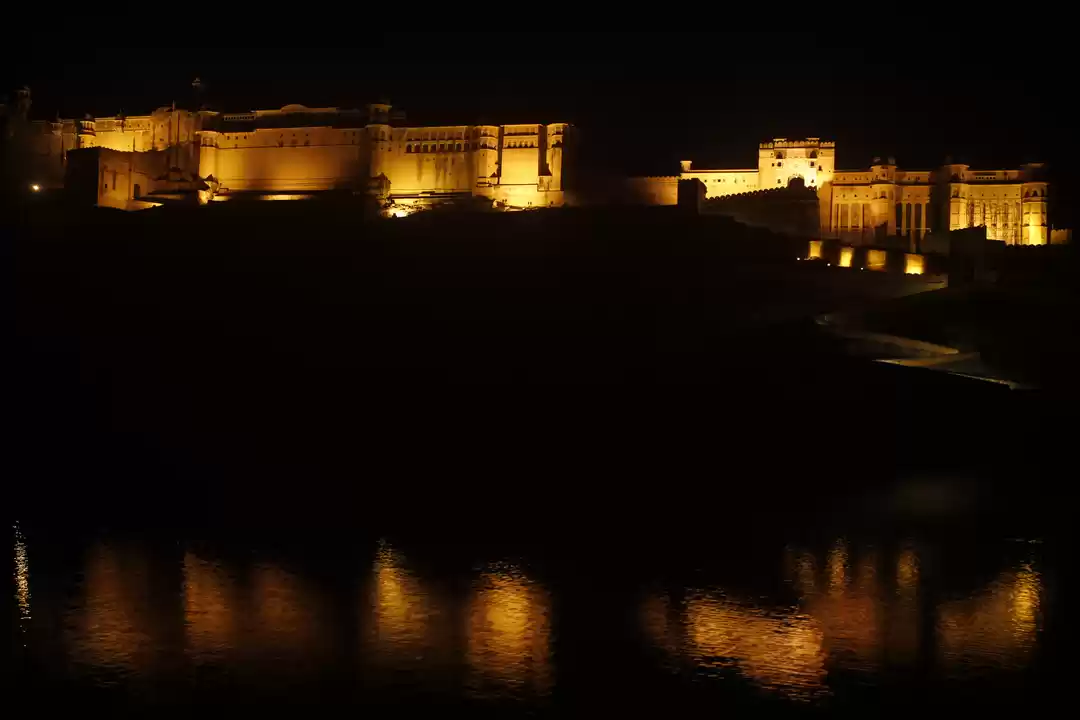Prologue
As I was navigating my motorcycle through the chaotic streets, something to the left, distant into the crowded landscape caught my attention. A fort, mightily sitting atop a hill and overlooking the entire city like a watchful protector. There were no doubts in my mind as to what it was and I knew I had finally arrived in the Blue city of Rajasthan, Jodhpur.
The second largest city in Rajasthan and the once capital of Marwar, Jodhpur is also referred to as the ‘Gateway to Thar’ due to its proximity to the Thar desert. Although it’s commonly known as the Blue City which gives an impression that all the buildings here are painted blue, that isn’t the case. Only a small part of the old town visible from the mighty Mehrangarh fort is decorated in different shades of blue while the rest of the town showcases a vivid palette.
One thing that struck me immediately when I arrived in Jodhpur was that it’s a massive city cramped into a small space. The streets were bustling with life with chaos being the only constant. The city is a huge maze of alleys flanked by small houses and shops, with autorickshaws, motorcycles, bicycles, cows all trying to pass at the same time. Unlike Udaipur which is a small yet modern touristy city with decent infrastructure, Jodhpur gives an impression of being thrown back in time. The best way to explore this city is by allowing yourself to get lost in this maze and photographing the life on the streets.
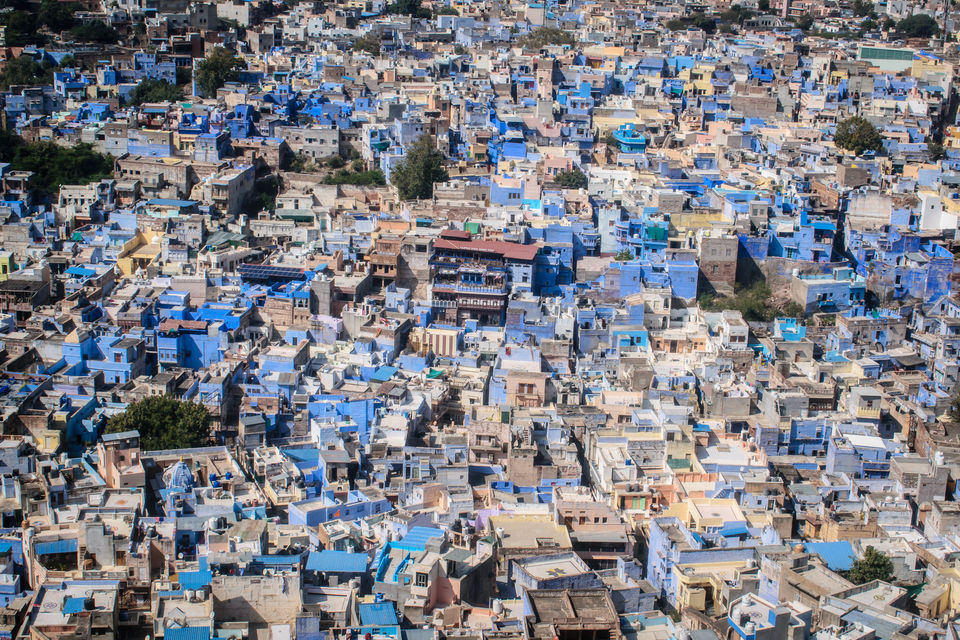
The Tour begins
I arrived in Jodhpur around 11am from Udaipur and straight headed for the guest house. Most of the guest houses in Jodhpur have a rooftop that allows unrestricted view of the Mehrangarh Fort. With this in mind, I had booked my accommodation strategically. A guest house close enough to the fort to provide a great panoramic view of the fort, but not too close that I end up staring at its walls and I had managed to find the perfect place.
Accommodation: Desti-Nation (INR 2000 for 2 nights)
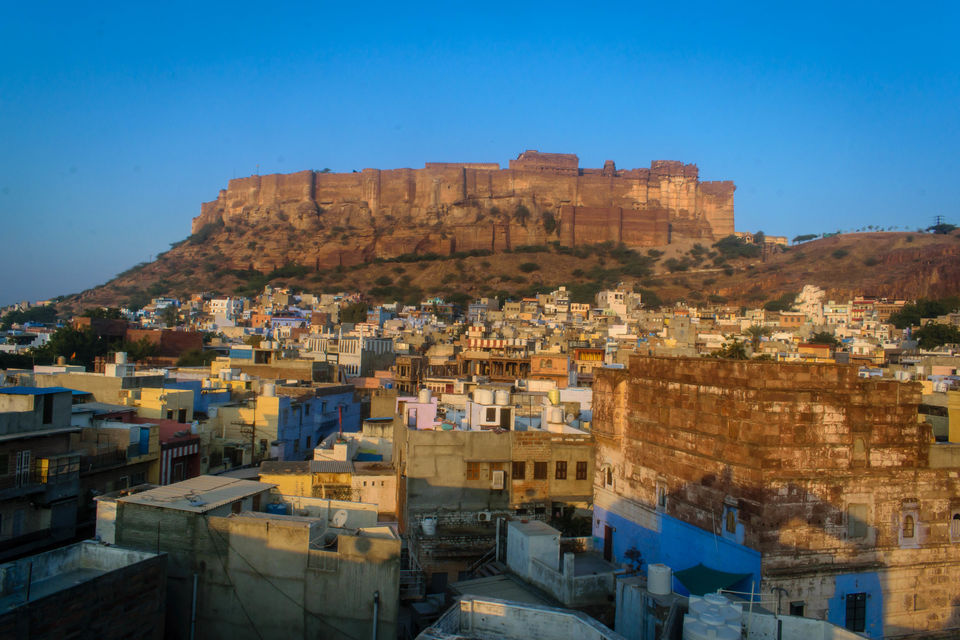
After a good rest and a refreshing tea, I was back on the streets of Jodhpur. Considering how small Jodhpur is, most destinations are only a 15min walk away. The closest attraction from my guest house was the Toorji ka Jhalra (Stepwell). Although located only a couple hundred meters from Ghanta ghar and having a lot of guest houses in the vicinity, there were barely any tourists at the location which was surprising to me.
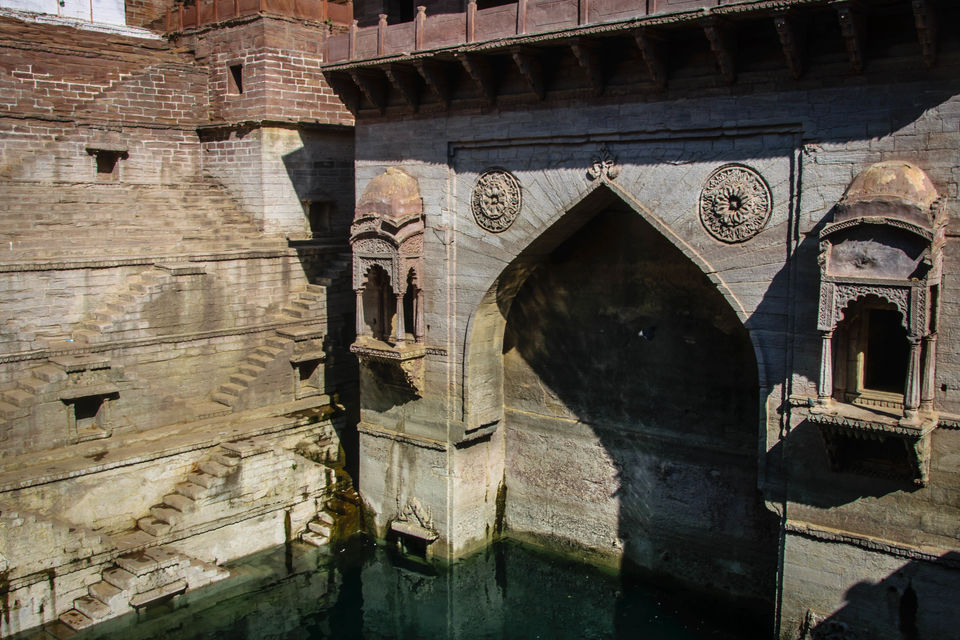
Toorji ka jhalra was built by Rani Tawarji, Maharaja Abhay Singh of Jodhpur in 1740, thus continuing with the age old tradition in Jodhpur of Royal ladies or Queens constructing the public water works. Until recently, the well was submerged and full of debris before it was cleaned up and restored. This 250-year-old architecture was made using the well-known red sandstone found in Jodhpur. With a depth of more than 200feet, it was once decorated with carvings of dancing elephants, medieval lions and cow water-spouts. The well’s original system had two levels of access and a different tank which were intended to get water into the well, driven by a Persian wheel controlled by bullocks. Today, the well is viewed as a fun place by locals as they flock to its clean water to beat the heat.
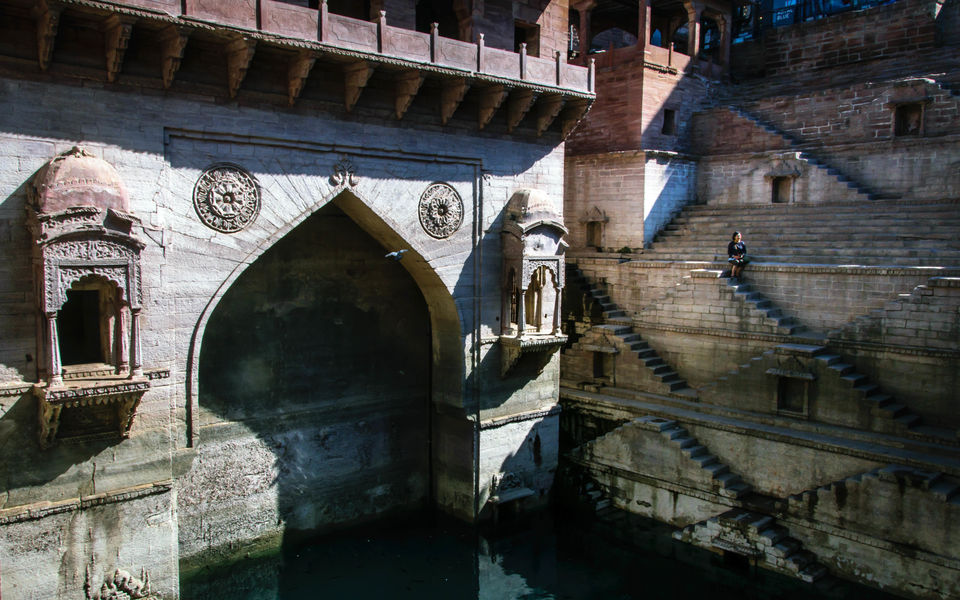
The best time to visit the well is around midday which is when the locals mostly visit for a dive. This provides an excellent opportunity for photographers to capture the well at its lively best, as children and adults alike are having a dip inside the cold waters.
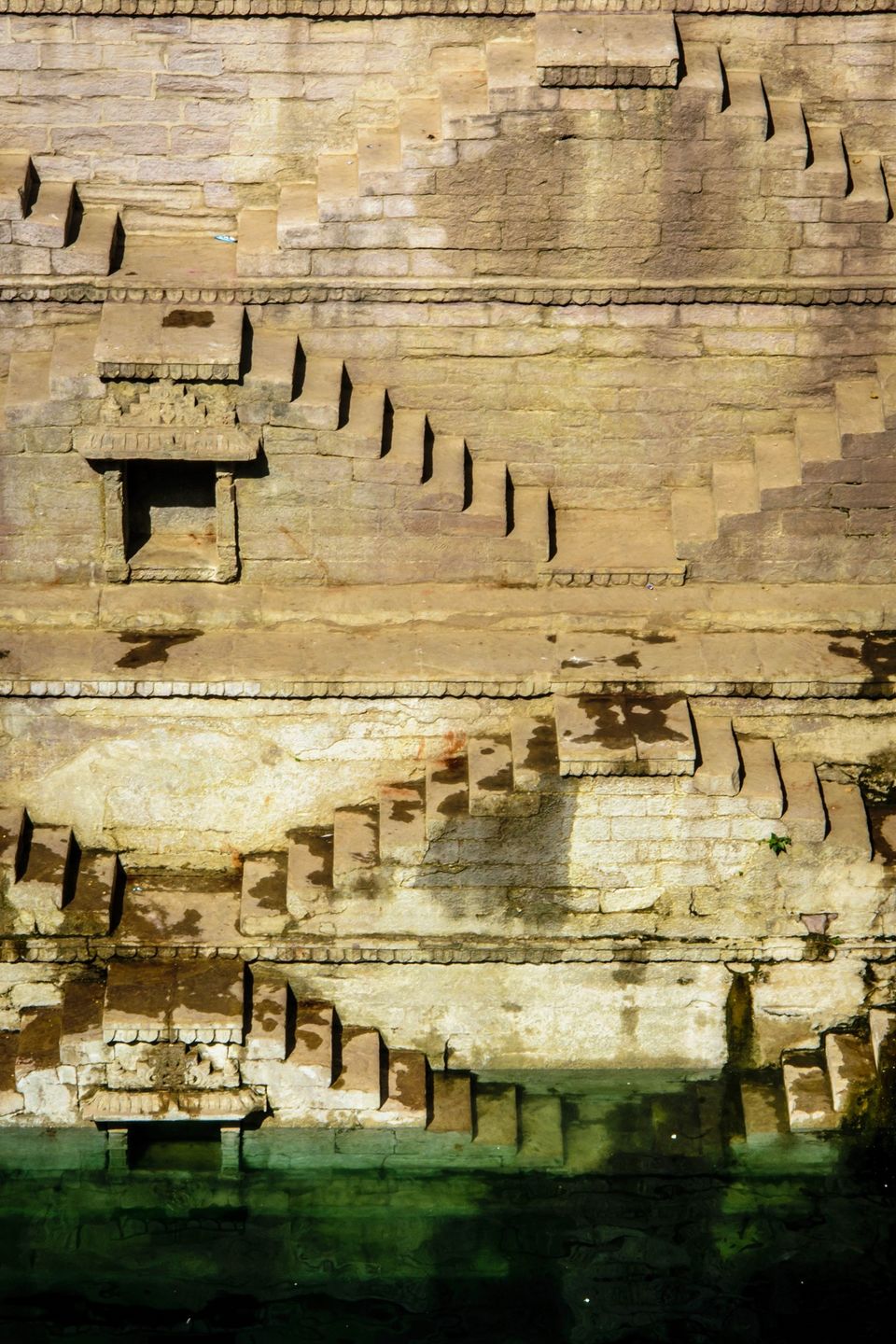
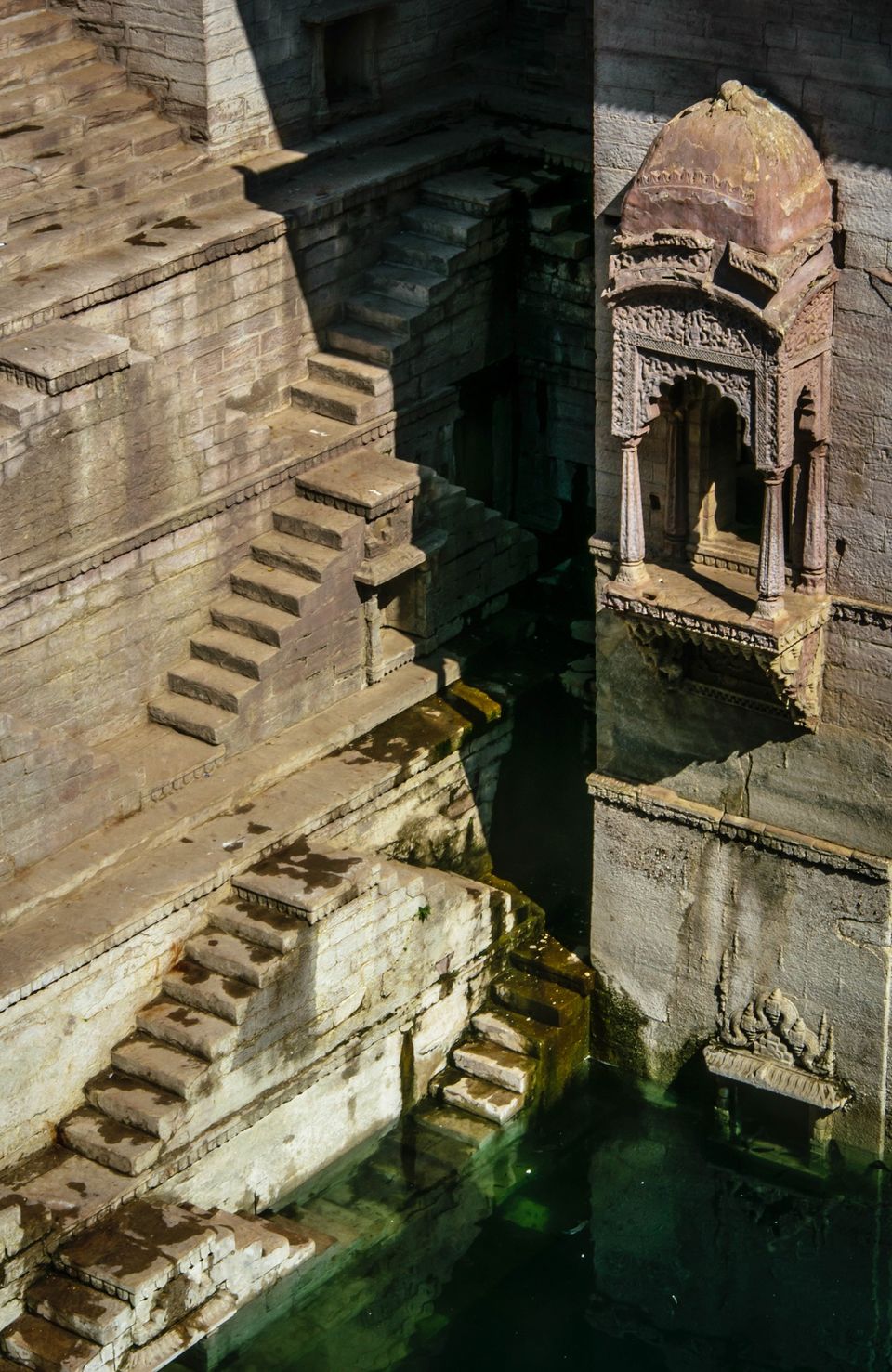
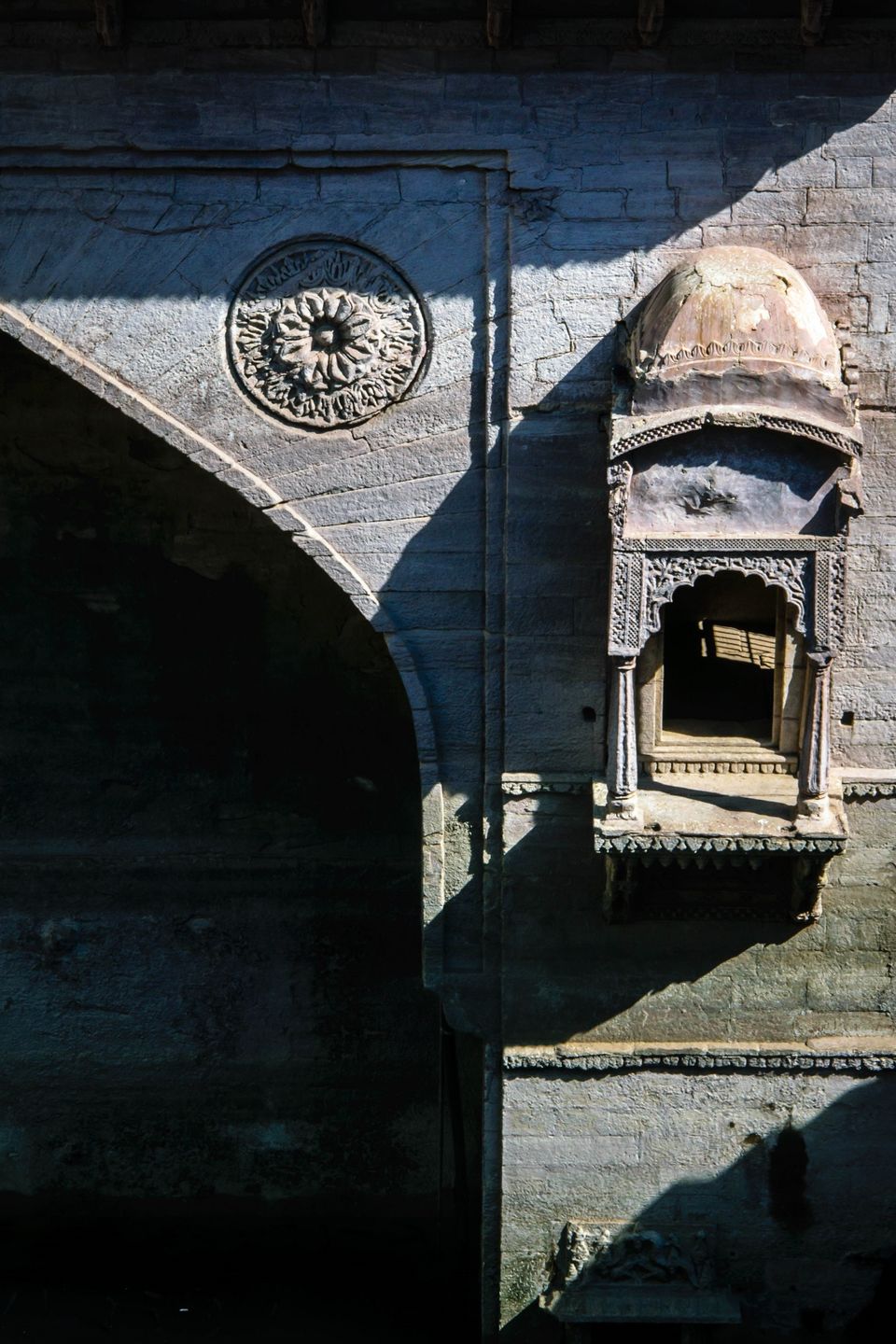
Later, as hunger began to take over, I went in search of any restaurant offering some delicious local Rajasthani food. However, as was the case with Udaipur as well, most of the restaurants turned out to be cafes mainly offering western food with the local food only coming at a premium. I opted for the humble cheap on the pocket Pasta and set my sights on the biggest attraction that Jodhpur has to offer, Mehrangarh Fort.
Saying that the fort is enormous would be an understatement. The fort dominates the landscape of the city and is the first thing you notice as you approach the old city. Considering how massive the fort is, I had already decided I would split my visit to the fort into two parts. The first day was dedicated to the exploration of the fort complex and the second day to the interior of the fort, which is the ‘Fort Museum’. There are separate blogs describing my entire tour of the Mehrangarh Fort, which again is divided into two parts: Fort Complex and Fort Museum.
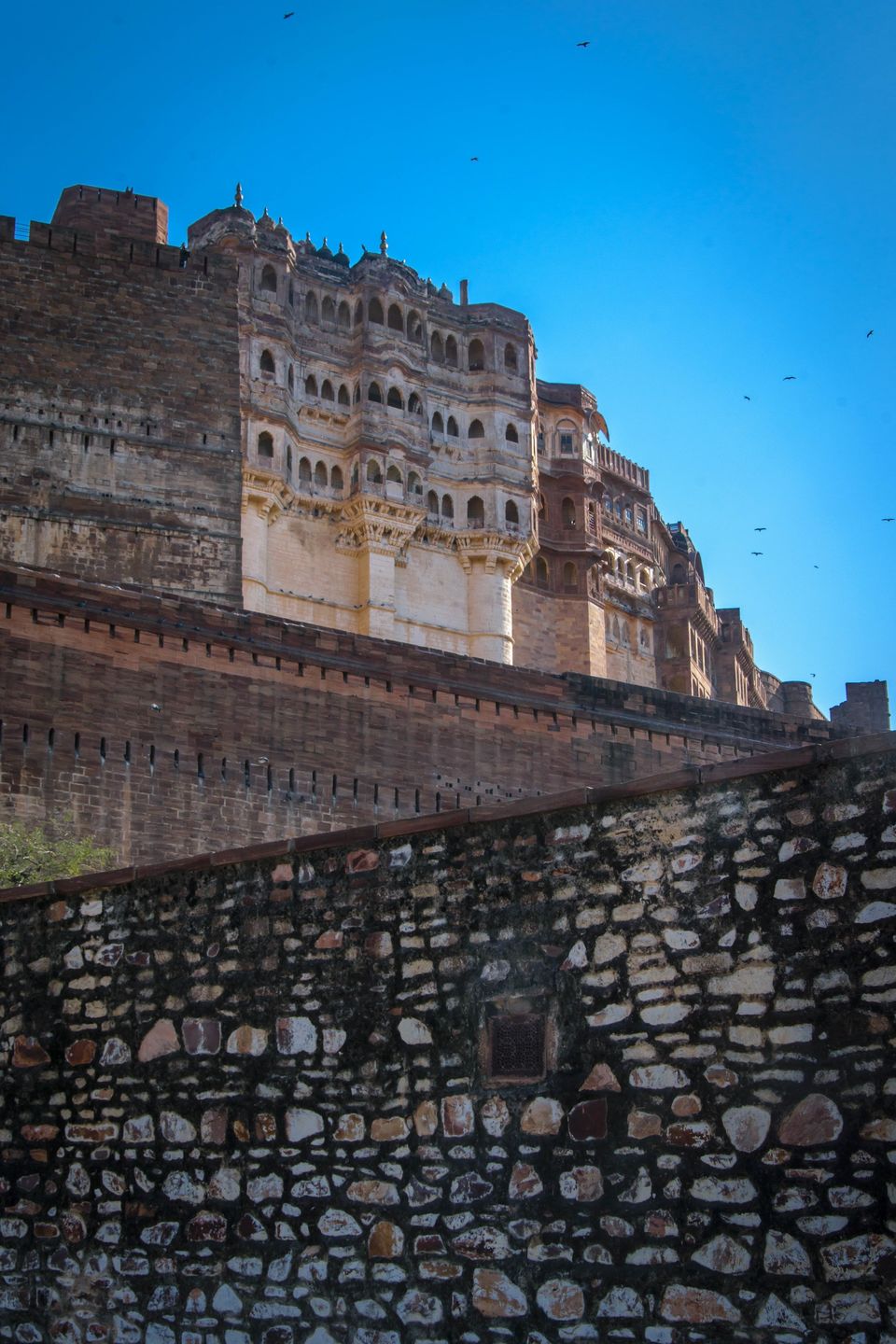
There are two main entrances to enter the fort. The first and the most widely used is located north east to the fort and has a huge parking space available. This road takes you along Rao Jodha Desert Rock Park and you would also pass Jaswant Thada on the way. However there is another way to approach this entrance. There is a staircase takes you directly to the fort and is located only a couple of hundred metres from Toorji ka Jhalra. I took this route the next day when I visited the fort again to explore the fort museum. Aside, the second entrance is located in the old city, southwest off the fort. If you are staying in that part of Jodhpur, it’s a lot more peaceful approach to the fort as it’s barely used by anyone.
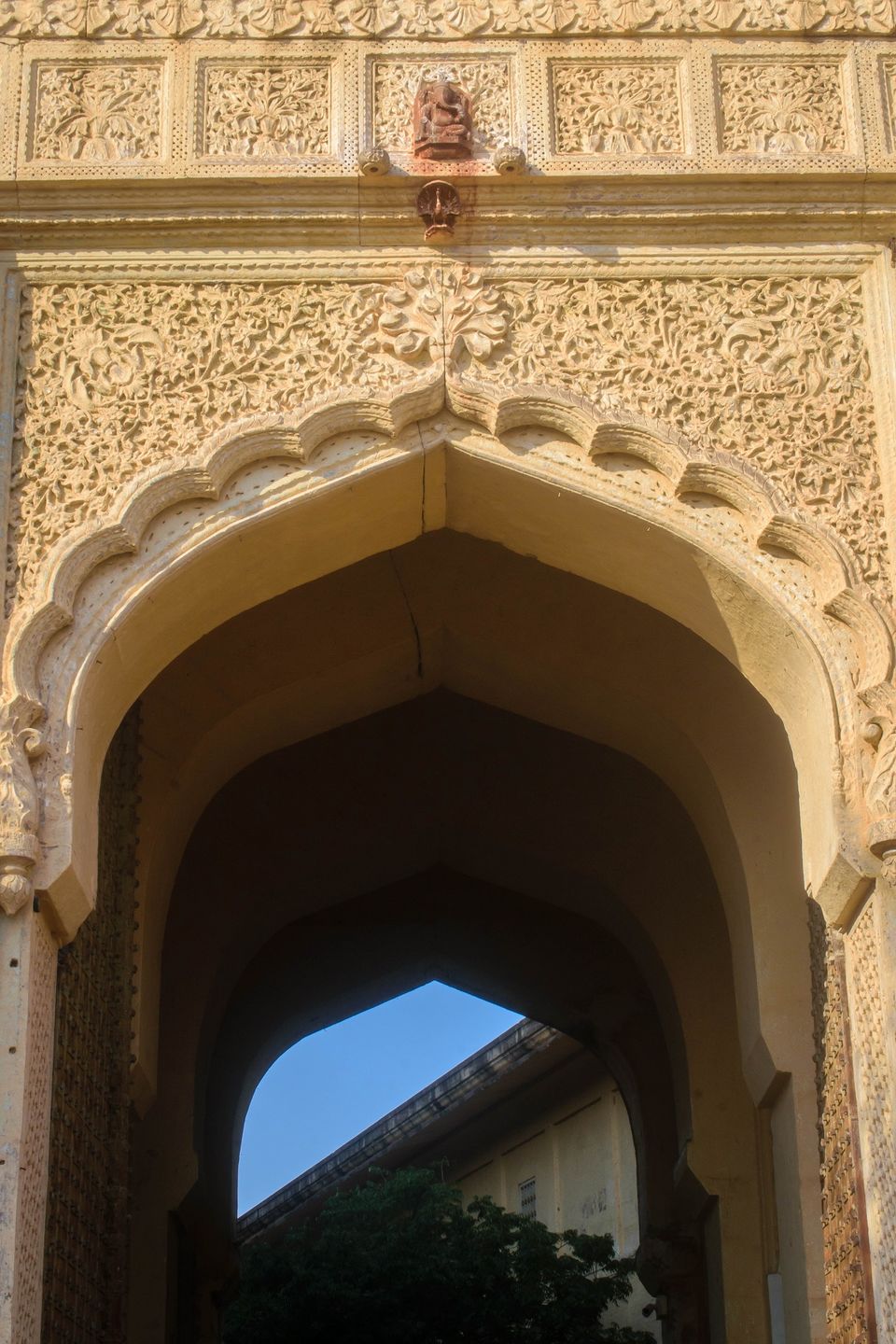
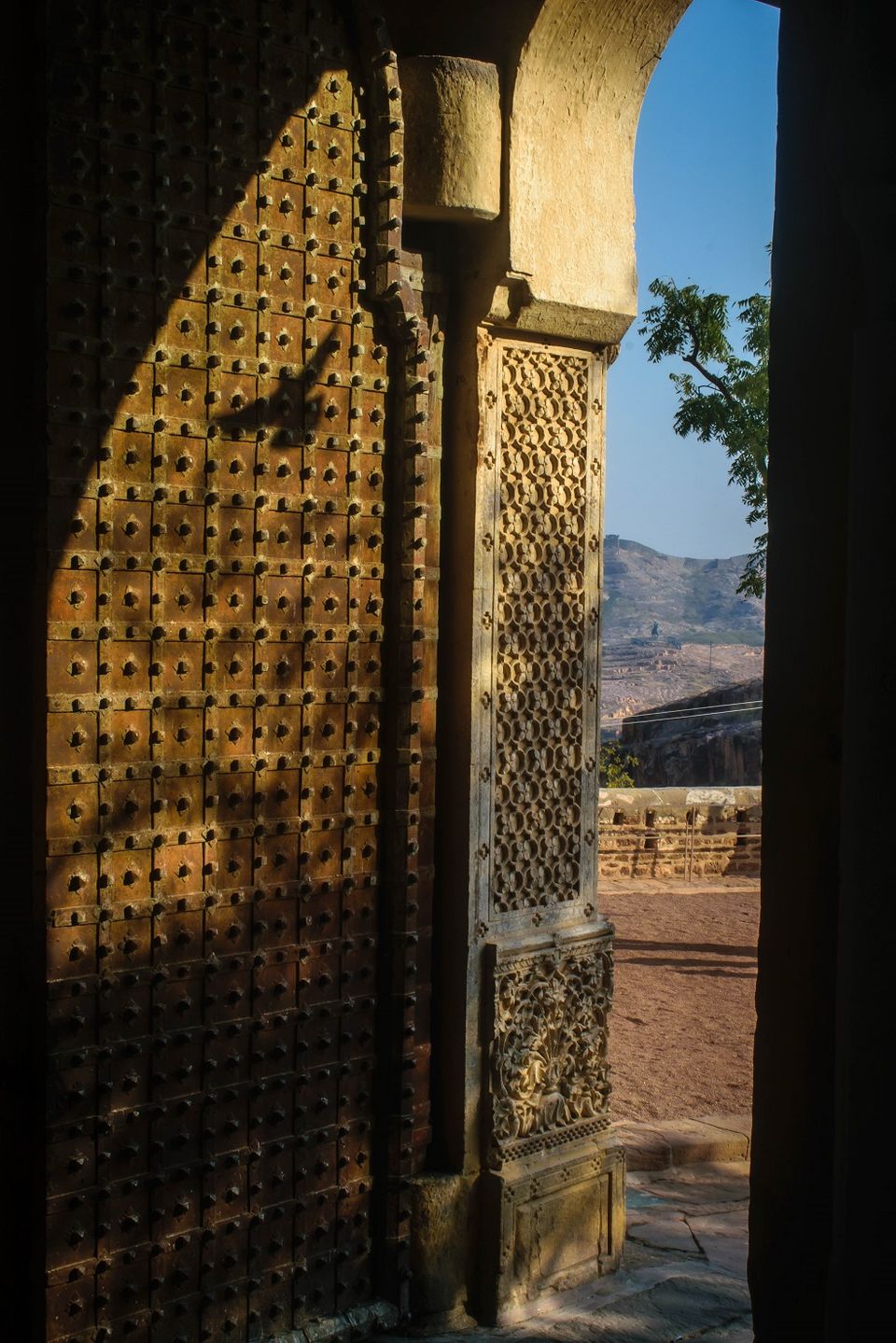
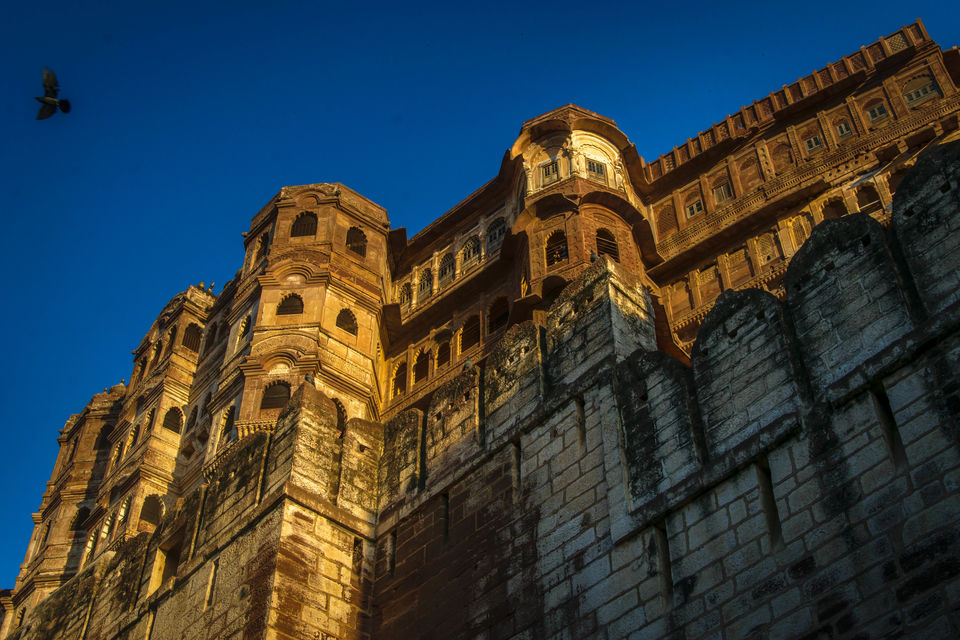
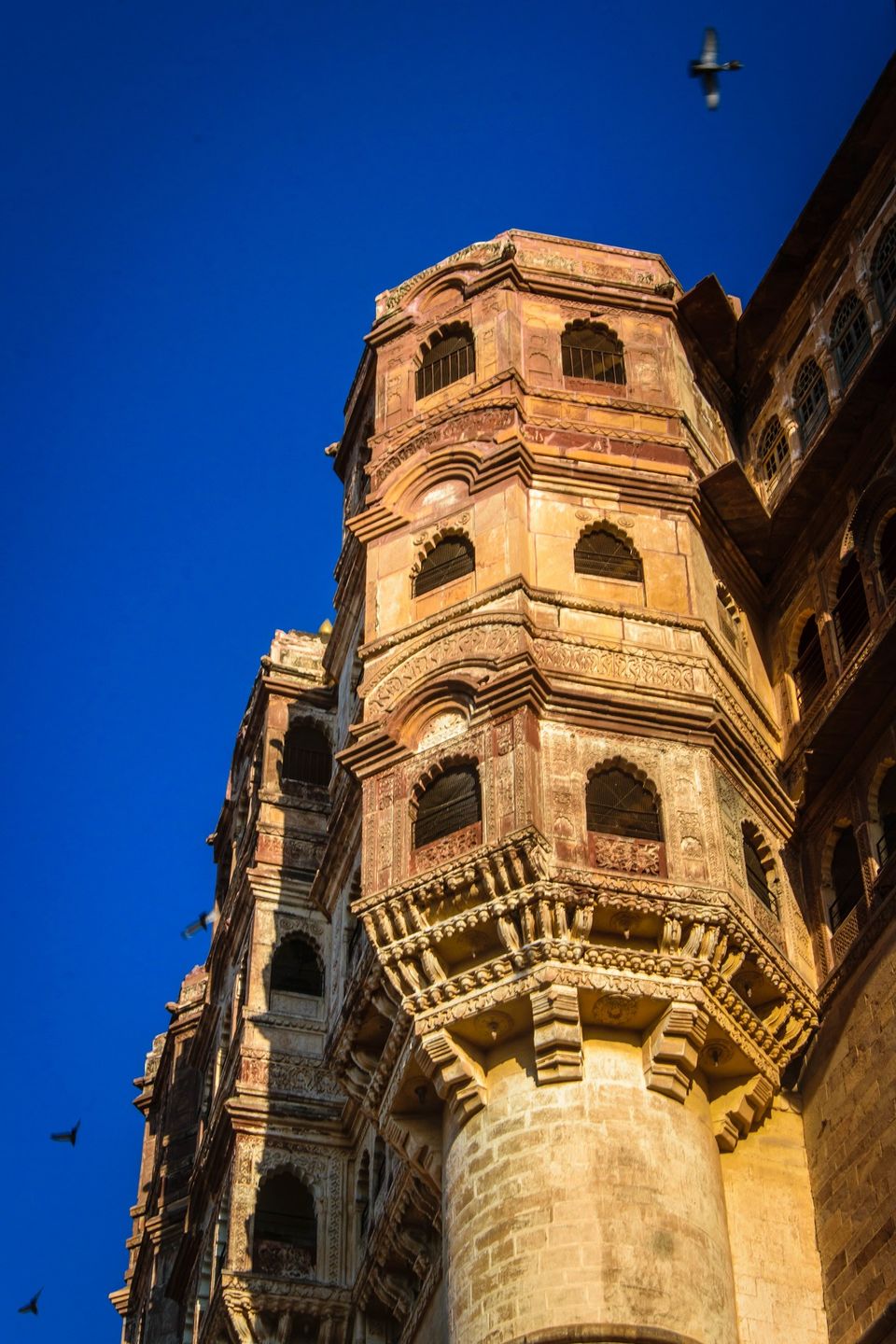
I finally reached the fort entrance and was absolutely spellbounded by the majesty of the fort. The fort always looked enormous while viewing it from the plains, however only when you stare at those towering walls from upclose, you truly realize the mammoth it is. Past the security check is the ticket counter. You don’t any ticket to explore only the fort complex, so I walked straight in. It took me around 2 hours to roam around the complex, as I clicked photos to my heart’s content hoping I had managed to capture the spectacle that Mehrangarh is.
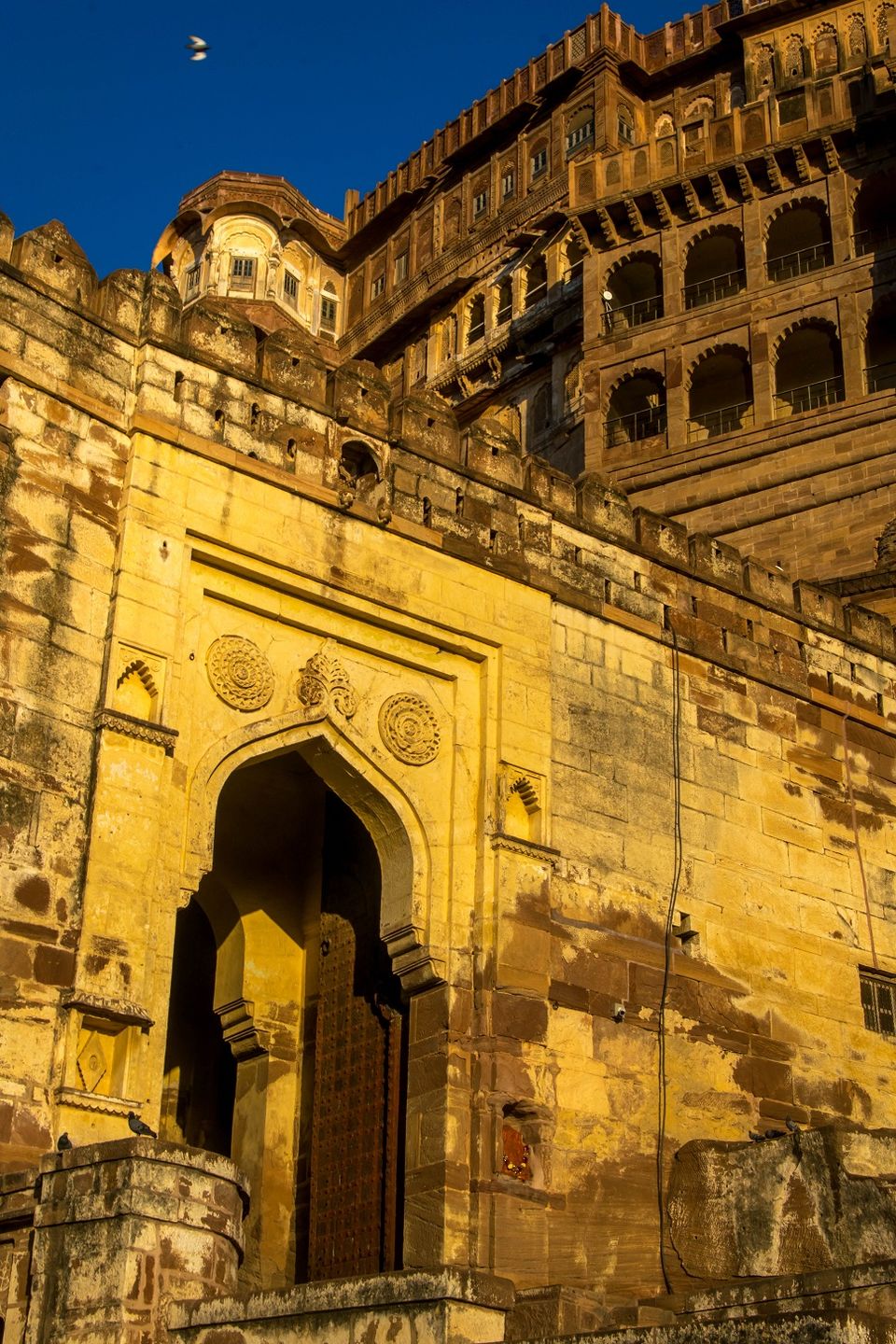
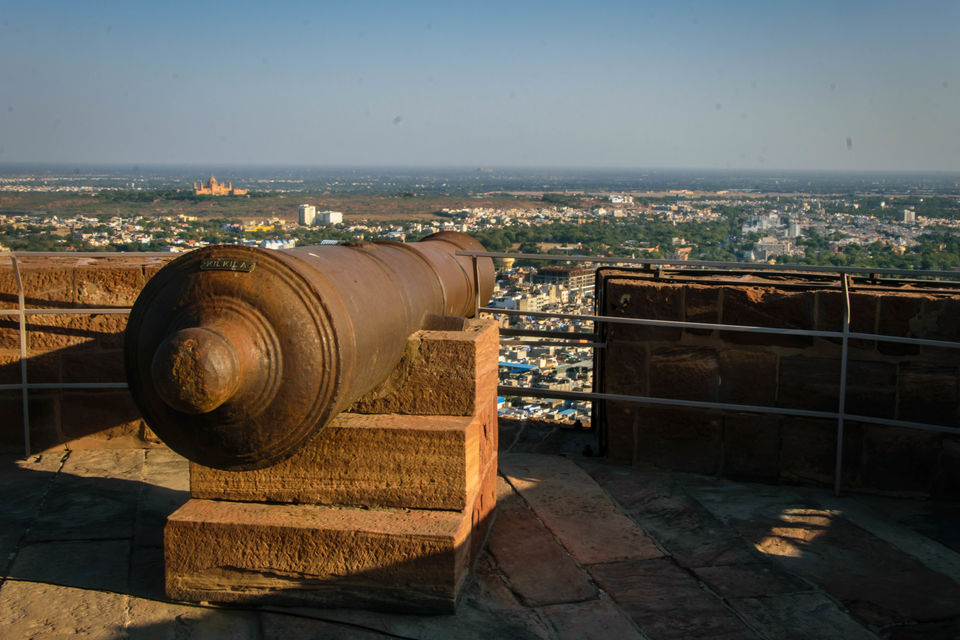
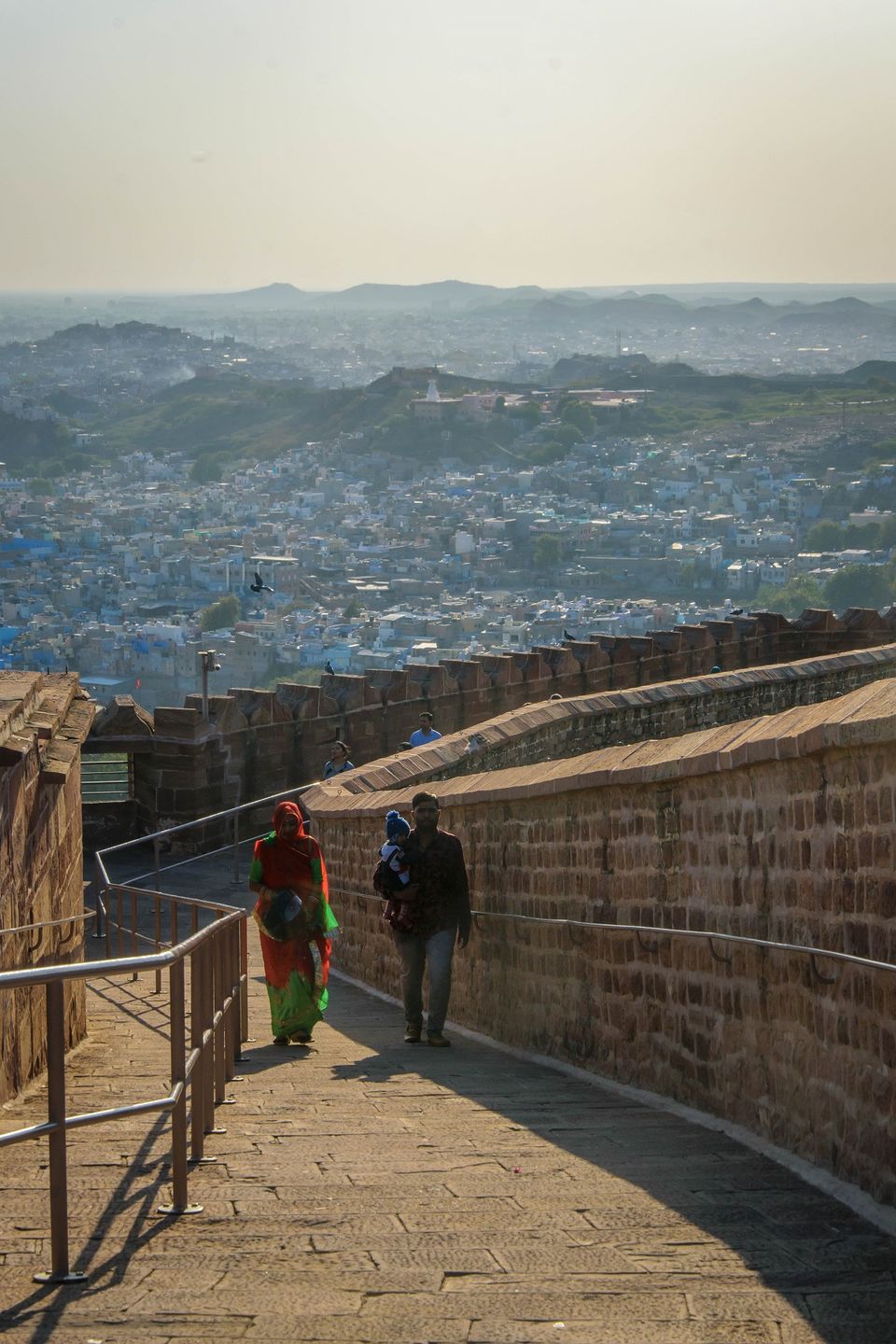
I decided to get back to my guest house to take some rest, before heading out back again for an evening stroll around Ghanta Ghar (clock tower).
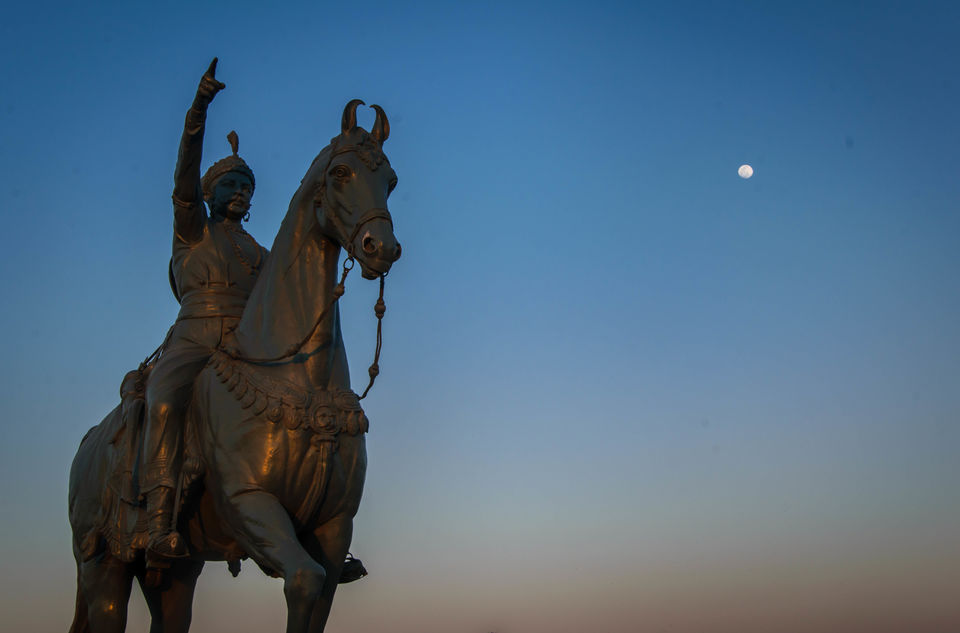
Ghanta Ghar is probably the busiest place in Jodhpur as the famous Sardar Bazaar is located here. The colourful and hectic market is another maze of streets lined with tiny shops selling local handicrafts ranging from leheriyas to jootis and all kinds of spices.
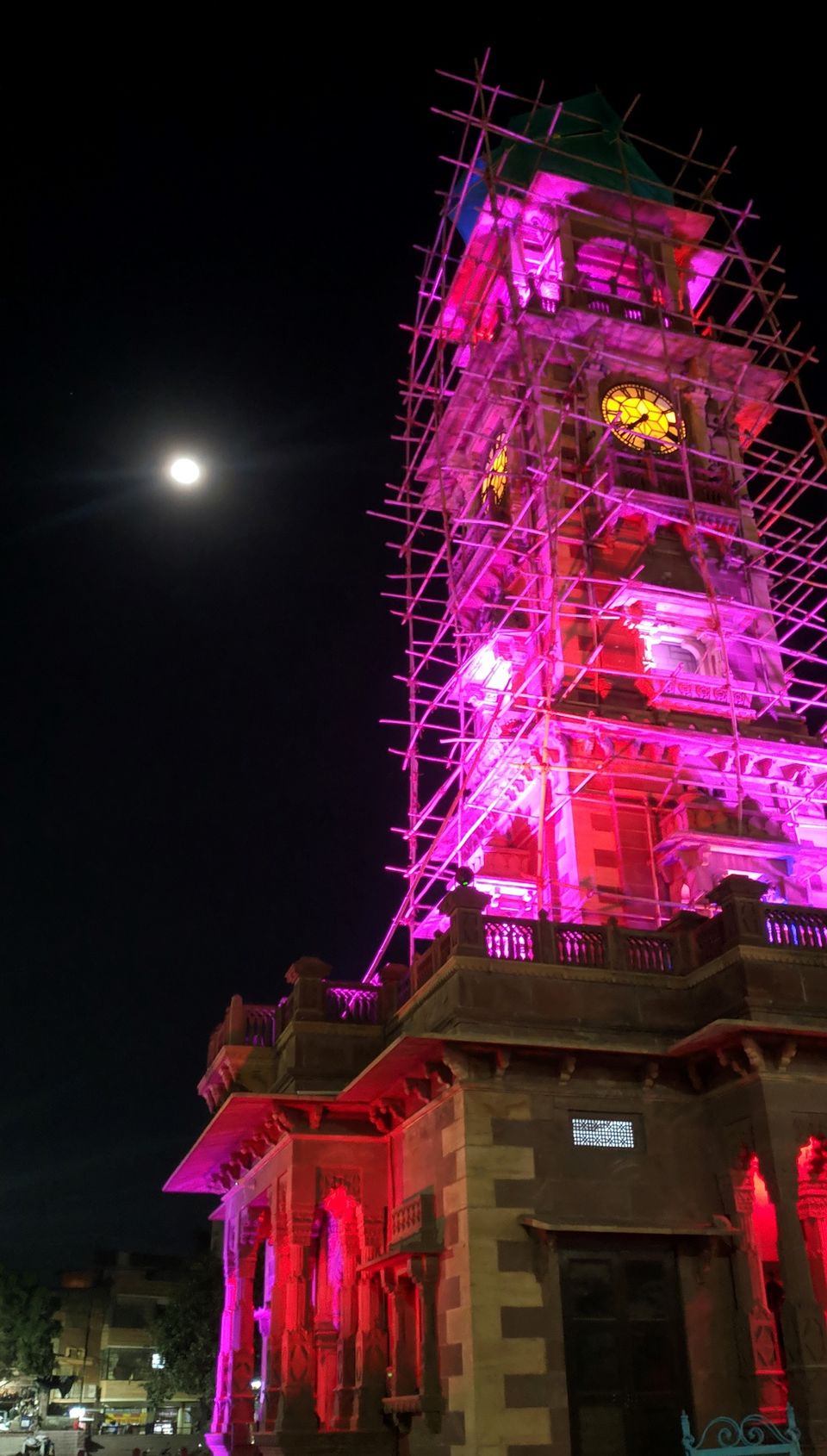
The clock tower was built by Maharaja Sardar Singh after whom the market is named. During my visit, the clock tower was under renovation and hence there was no entry allowed inside. The clock tower itself offers a great view of Mehrangarh fort. The clock tower is flanked by three gates, one is the entrance to the old city while the other two take you to the ‘New city’.
Aside handicrafts, there are many other shops selling a variety of local street food. You can gorge on Mawa kachori, Mirchi vada, Jalebi and Makhaniya Lassi. I tried the Lassi but honestly, it tasted like Shrikhand, (Maharashtra based desert also made from curd) courtesy of how thick and sweet it was. However, everyone has different taste buds and I am sure some people would love it. Later, I had my dinner at a restaurant and called it a day.
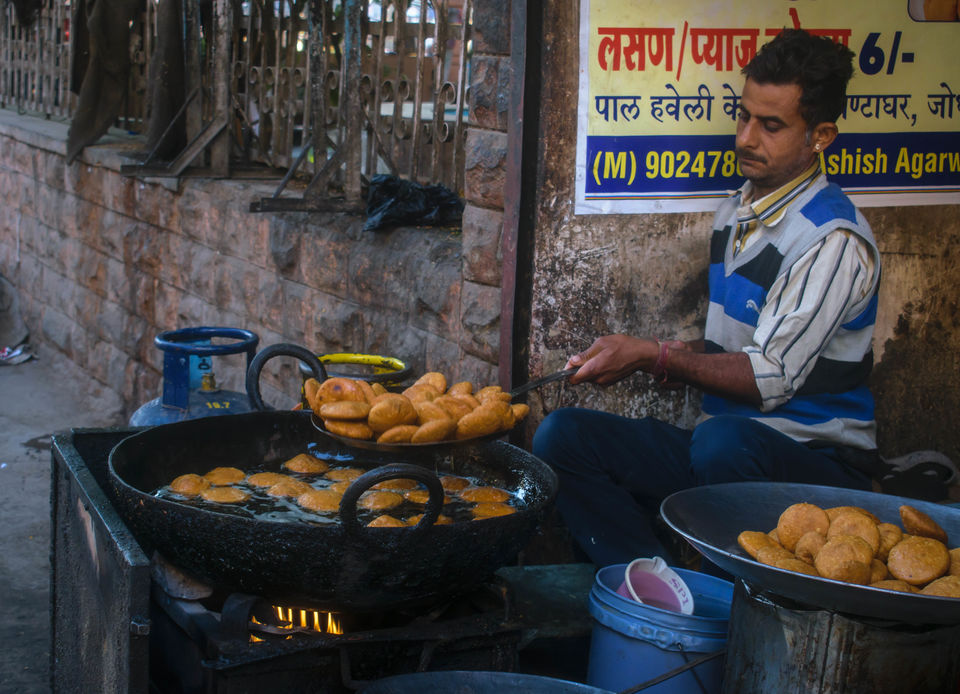
The next day…
Next morning was the first day of my trip I wasn’t up before sunrise. I woke up around 7:30am to the warm golden sunlight entering my room, escaping past the curtains. The guest house served me a breakfast of piping hot and delicious aloo parathas. Post my breakfast, I started out for my second day of the tour. First destination of the day was Mehrangarh Fort, as I was still yet to visit the Fort Museum.
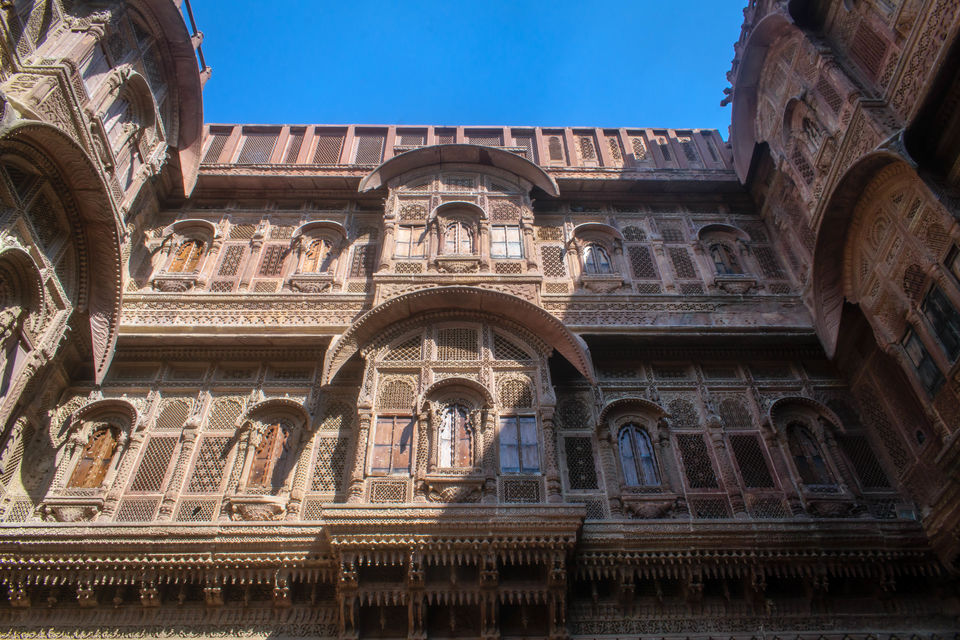
Instead of going to the fort on my motorcycle, I chose the staircase path which was barely a 5min walk from the guest house. Unlike expected, the stairs weren’t too steep and the climb up was fairly easy. Moreover, it took me lesser time than it did the earlier day when I had taken the road with the added bonus of the breathtaking views of the fort on offer during the climb.
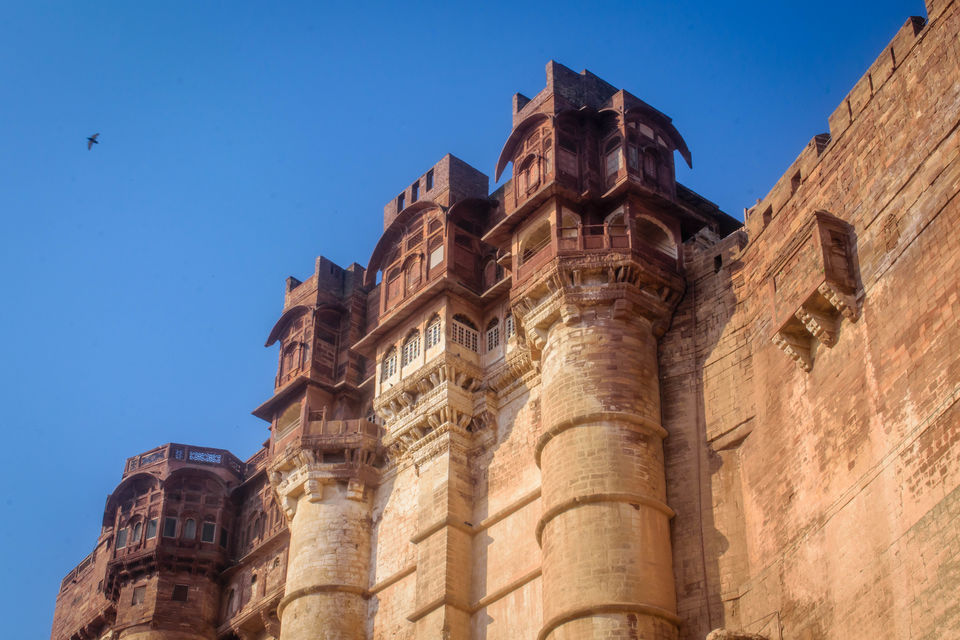
The entrance ticket to the fort museum was INR 120 for Indian nationals. There are guided tours available and the tariff depends on your group size. However there’s an option for an audio guide as well at INR 180. The audio pretty much repeats the same information which is already provided on the signboards inside the museum and instead, I would highly recommend taking a guide along especially if you are in a group. The museum is expansive and there’s a lot of information and history you would miss out on otherwise. I had to make do with the blogs available online as I kept reading through the information available on any section I entered during my tour of the museum.
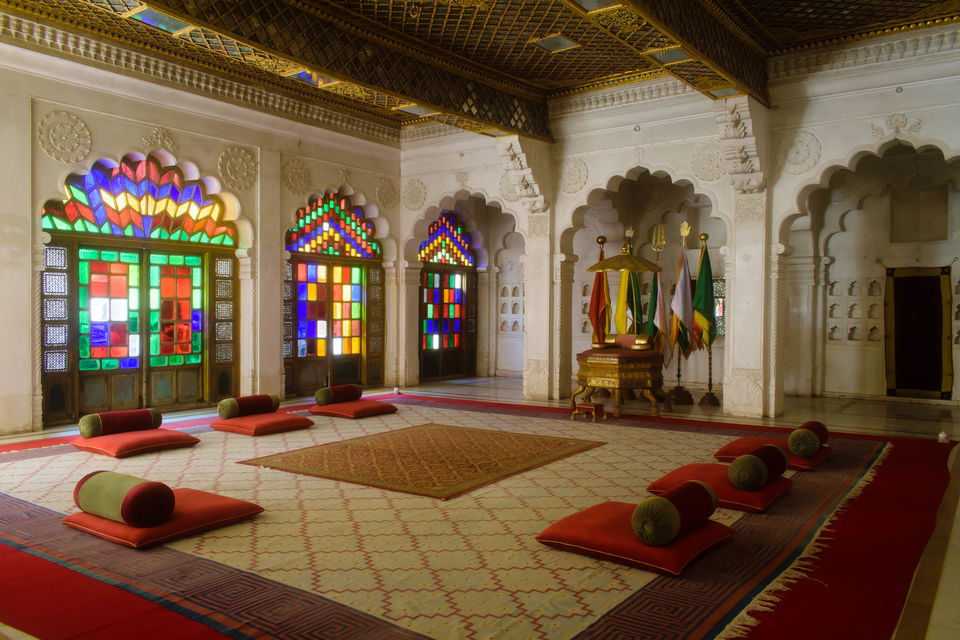
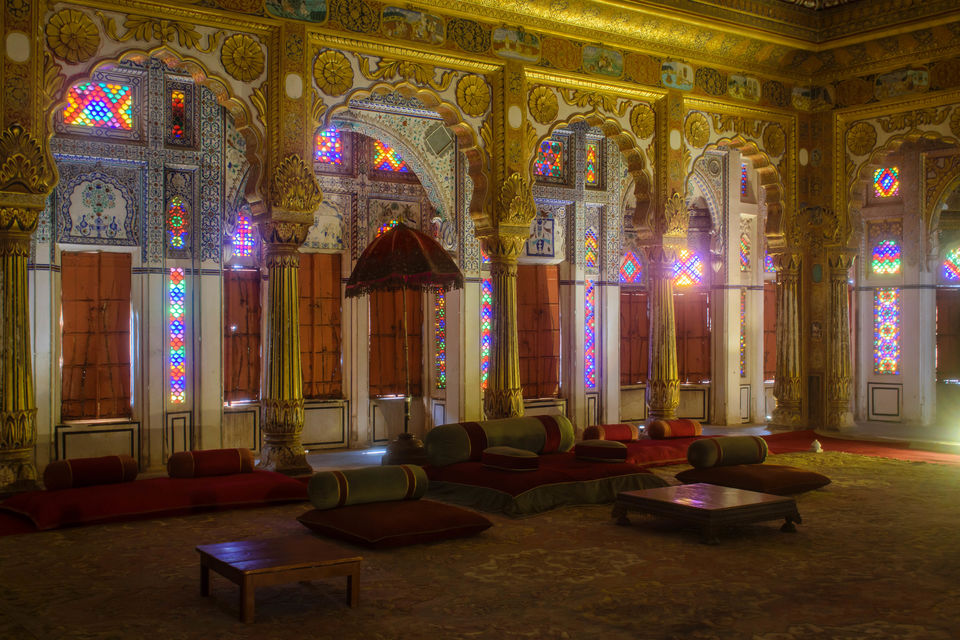
About 3 hours later, I finally came out from the museum. Jacqueline Kennedy, the former First Lady of the United States, on her visit to the fort had said "I have just seen the eighth wonder of the world.” I had a similar sentiment as I left the fort complex. Such is the beauty of the fort!
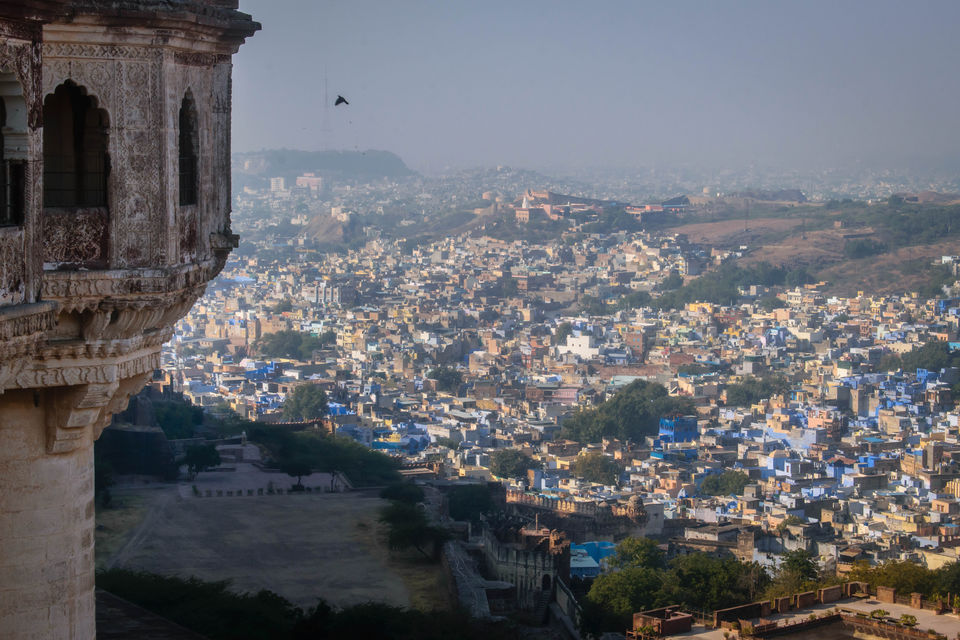
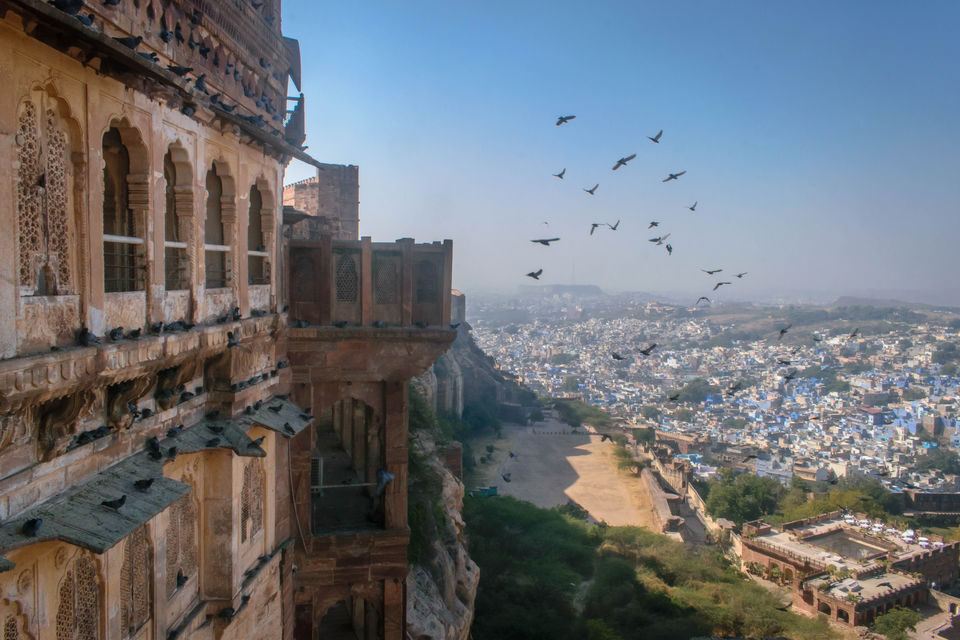
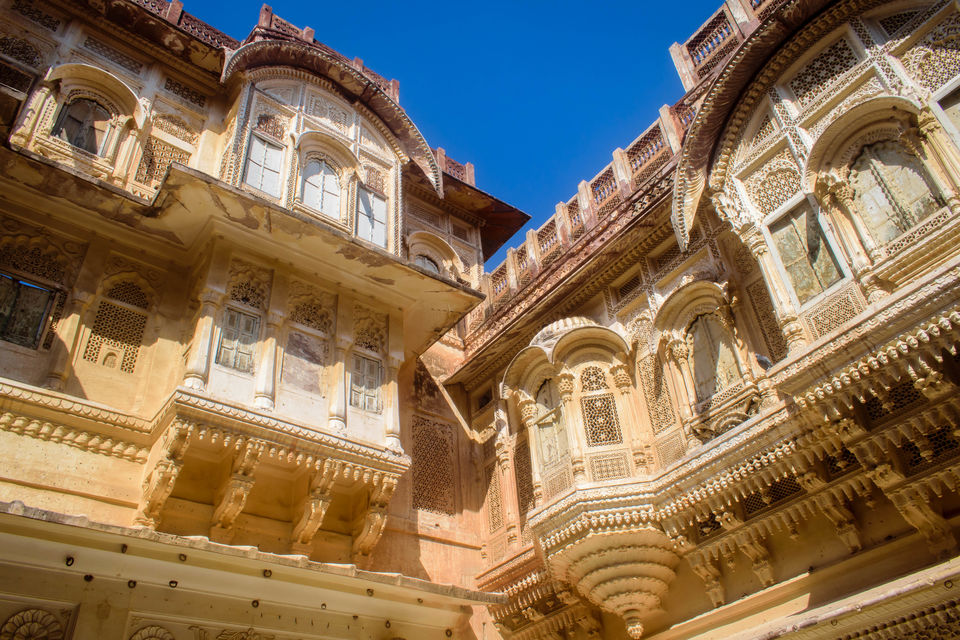
Later, I headed towards the other side of the fort, for a photowalk of the Blue City. The Blue City is a specific region located south west to the fort. The landmark is Mataji ka Pol, Navchokiya and isn’t difficult to locate even without any maps, as the locals are more than capable to guide you to the right spot.
This was going to be my first experience of street photography and I was excited remembering all the amazing photos of the Jodhpur streets I had seen online. The life bustling inside those labyrinthine streets flanked by the indigo blue houses presented a unique opportunity. The custom of painting the houses blue originated from the need to convey that Brahmins lived in there. However, the practice ended up spreading to other residents as well as it was believed that the blue colour is a mosquito repellent and provided insulation against heat.
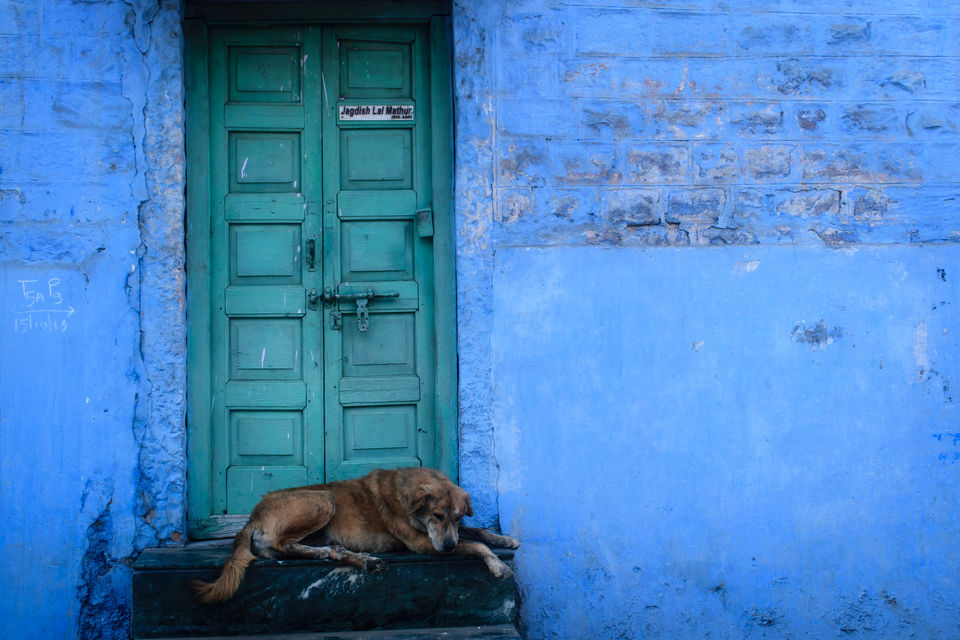
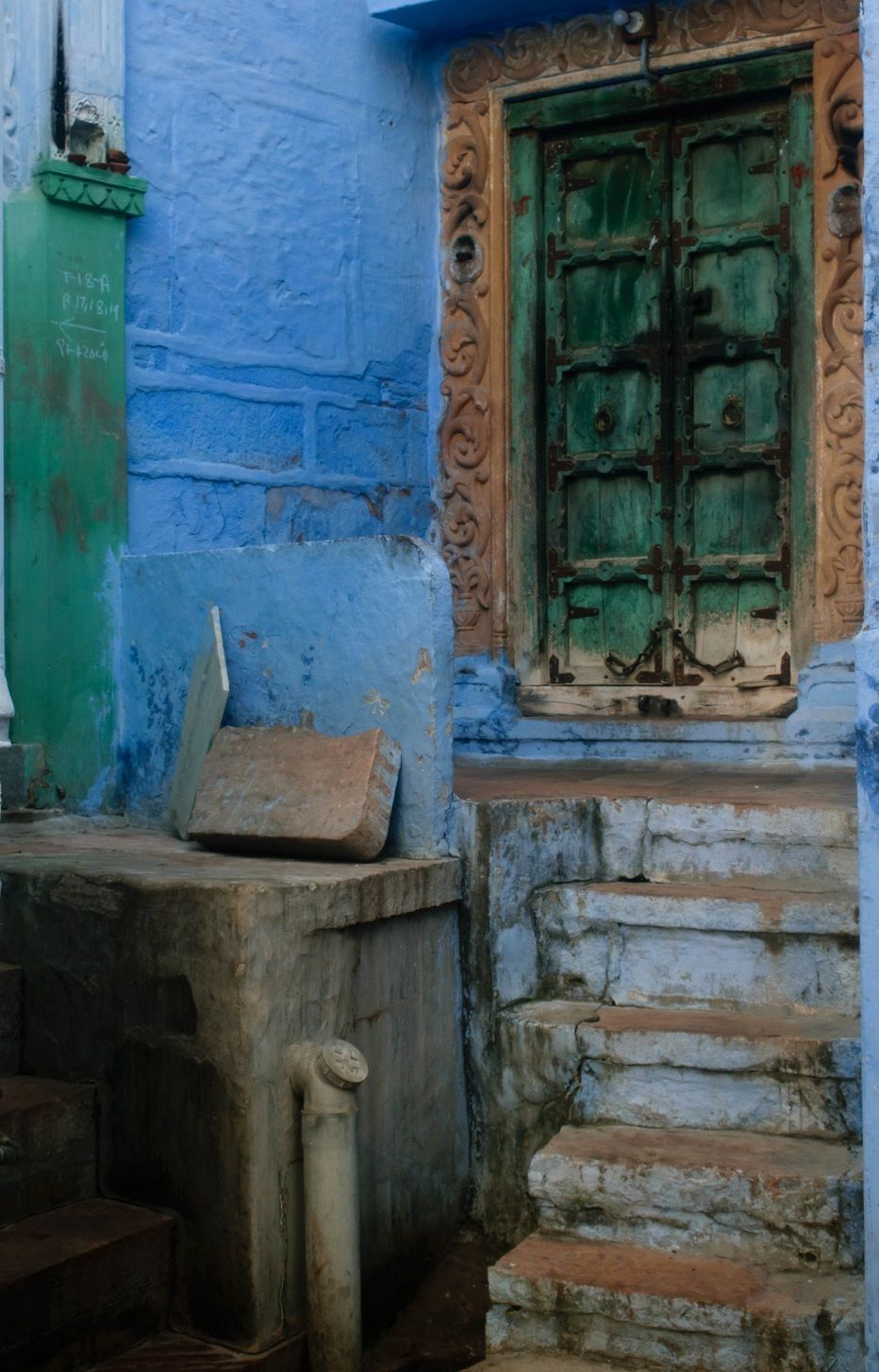
As I walked through those alleys, the opportunity never presented itself. The streets were deserted with no sign of life except the few dogs that weren’t exactly welcoming of the unknown visitor. It struck me later that I was wandering around on a Sunday afternoon, at a time perceived to be perfect for a peaceful nap. However, I decided not to give up but the persistence didn’t bear me any fruits. Finally, tired and hungry, I called off the tour after spending around 2 hours in the neighbourhood.
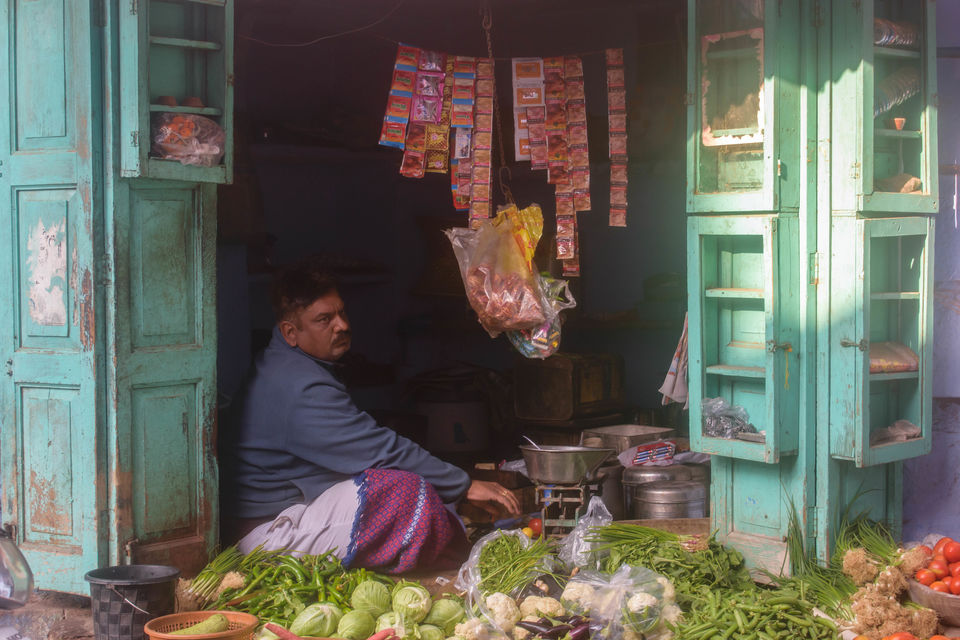
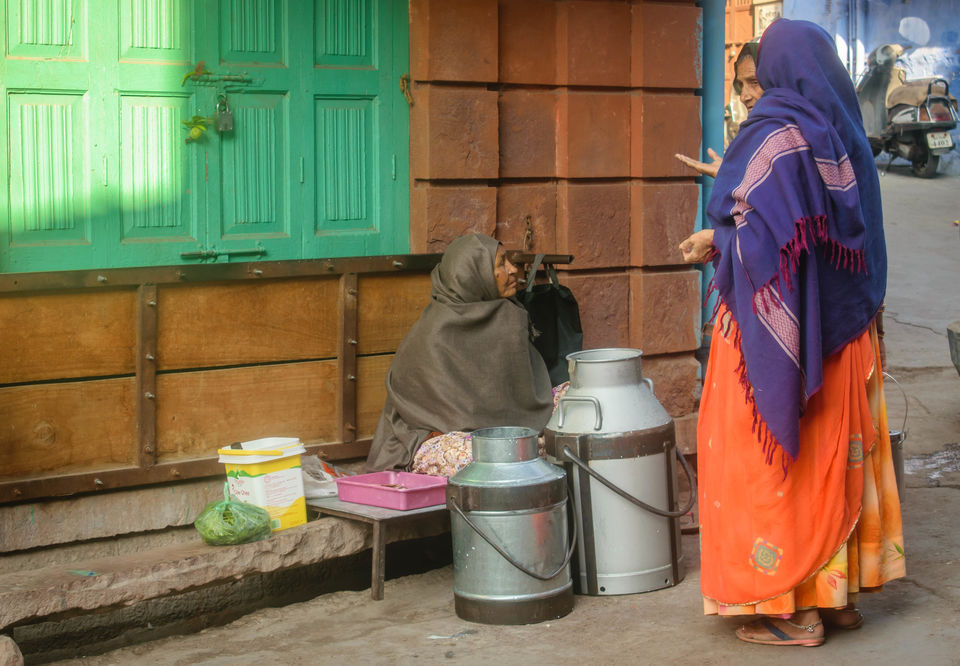
Post lunch, I came back to the guest house for a deserved rest. Late in the afternoon, I again headed back out and my next destination was Rao Jodha Desert Rock Park. The park was only recently developed in 2006 to try and restore the natural ecology of a large wasteland near Mehrangarh Fort.
Prior to 2006, it was overrun by 'baavlia' (Prosopis juliflora), an invasive, thorny shrub introduced from Central America almost a century ago, by Maharaja Umaid Singh. His intent was noble but it led to an ecological nightmare. The shrub invaded the once grassland as it bullied the local vegetation out courtesy of the toxins released by its roots, thus earning the nickname 'baavlia' which means mad.
The goal was to eradicate the baavlia and create a suitable home for native rock-loving plants that usually grow in the regions of Thar desert. By 2008, the authorities had managed to clear all the baavlia and there were 80 species of native plants growing in the nursery. Almost a decade on, the park attracts a lot of wildlife and has around 150 species of birds which includes 30 species of winter visitors.
The park provides an excellent opportunity for wildlife photographers, considering it is home to a wide variety of flora and fauna. However my main interest lied in photographing Mehrangarh Fort which is situated at the edge of the park.
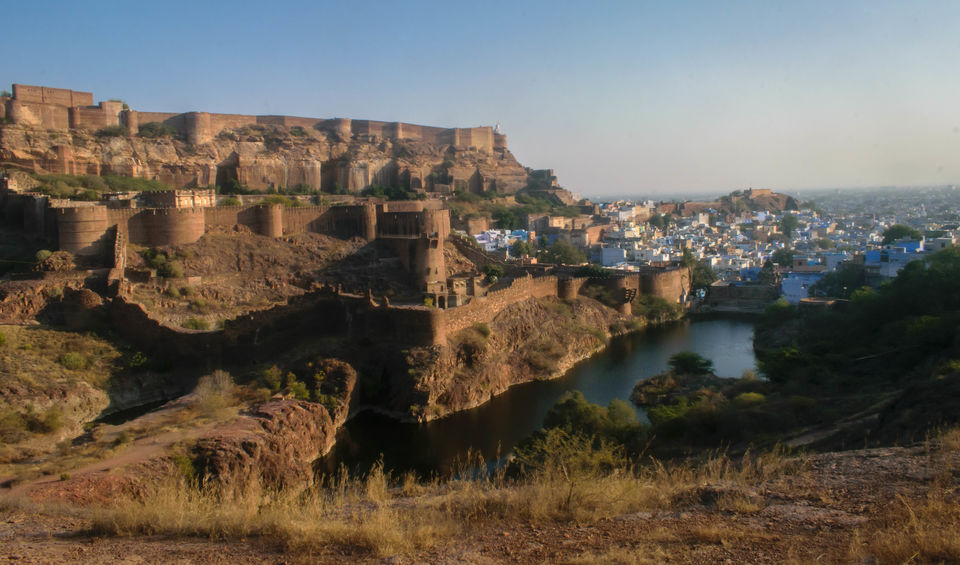
The main entrance to the park is by the Singhoria Pol on Fort road. The entrance ticket costs INR 100 and there is a guided tour available for INR 200. There are 4 trails you can choose from: Yellow, Green, Red and Blue and each trail takes around 90min to cover. I had taken the Green trail which takes you along the City wall and provides you some amazing views of the fort and the rest of the city. For people interested in watching the migratory birds, Devkund Lake is the place to visit which lies on the Blue trail. However, to visit this trail you need a separate ticket and it is mandatory to take a guide along. This trail is accessible from behind Jaswant Thada wherein lies another entrance to the park. The best time to visit the park is in the late afternoon when the sun has entered its golden phase, thus offering some great shots of the fort. Moreover, the park is pretty much an open playground, so it can become really tiring if you visit any other time of the day.
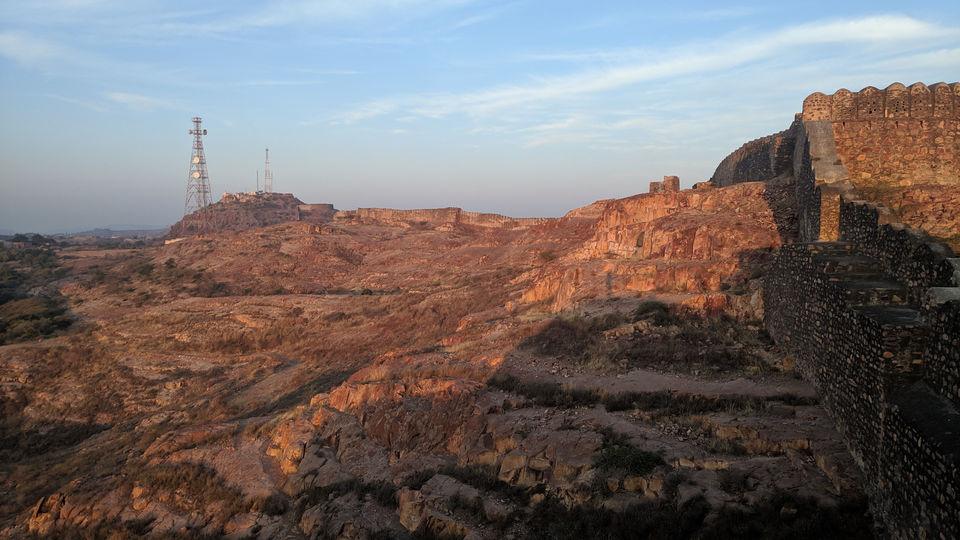
Also, there is a spot close to Devkund Lake that offers the classic view of Jodhpur city with Mehrangarh Fort in the backdrop and Jaswant Thada in the foreground. However to access this spot, you need to buy a ticket for the Blue trail. Best time to visit is during sunrise and I came to know about this spot pretty late in the evening. It is usually recommended to buy the ticket in advance, especially during peak season. I tried my luck at the ticket office which was already closed when I returned there post my photosession at the park. Fortunately for me though, the authorities still hadn’t left and I requested them for the Blue trail ticket for next morning and they obliged.
By the time I left, it was already almost time for sunset. I quickly hoped on my motorcycle and headed for Maa Jwalamukhi Devi Temple aka the City View point. This offers the best view of the Blue city and sunset is the most preferred time to visit the spot. However, it’s not easy to find. Google maps pretty much directs you in a random location as I found out and I barely made it in time for the sunset. Everyone else who was present at the place had a guide along with them and I devised they were on the Blue city walking tour (couple of organized tours available).
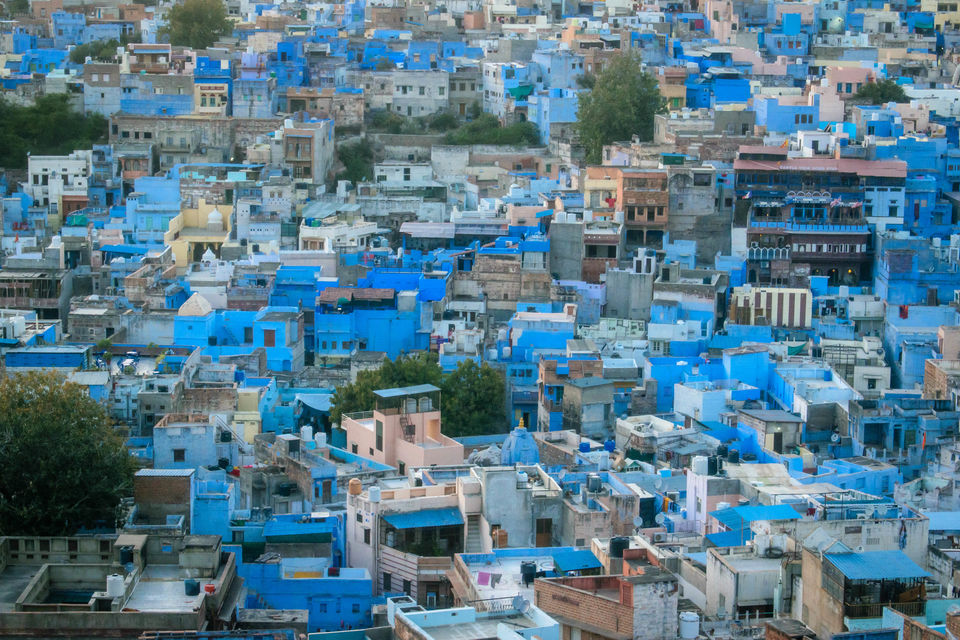
Later, I headed back to the guest house for an evening nap. Aside the tourist spots I visited, there are a couple other options as well like Jaswant Thada, Mandore Garden and Umaid Bhawan Palace. The latter two are located around 8km from the city in different directions and only way you can cover them as well is if you have two full days at your disposal. This is only possible if you reach Jodhpur late in the night and stay the next 2 days. Considering I had reached somewhere around 11am, I knew I would have to drop some of the spots to have a smooth travel experience.
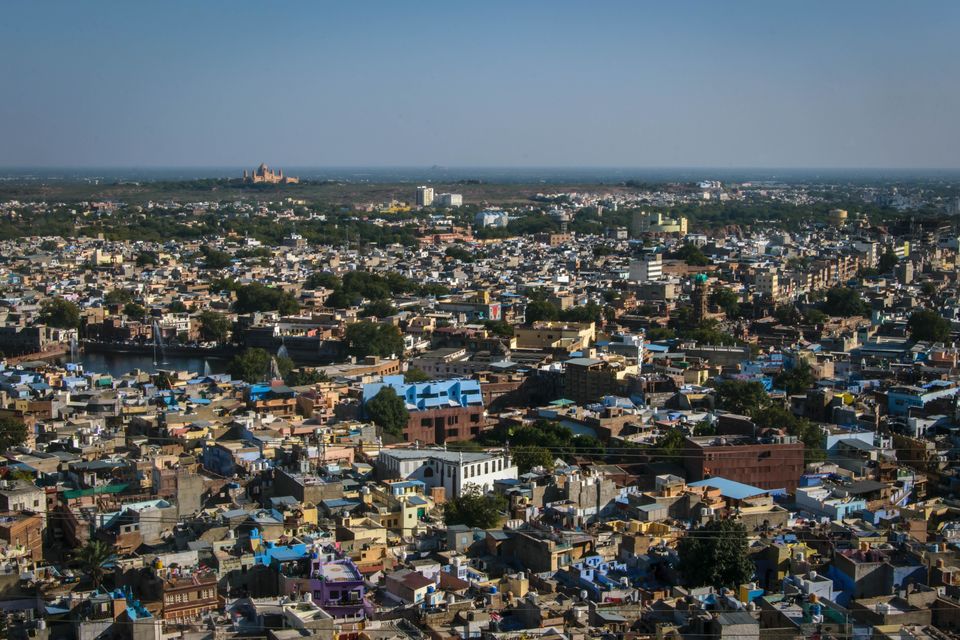
After my nap, I again paid a visit to the Sardar market to satisfy my craving for Kachori and Lassi. Post my late evening snacks, I had my dinner and returned to the guest house as I retired for the day.
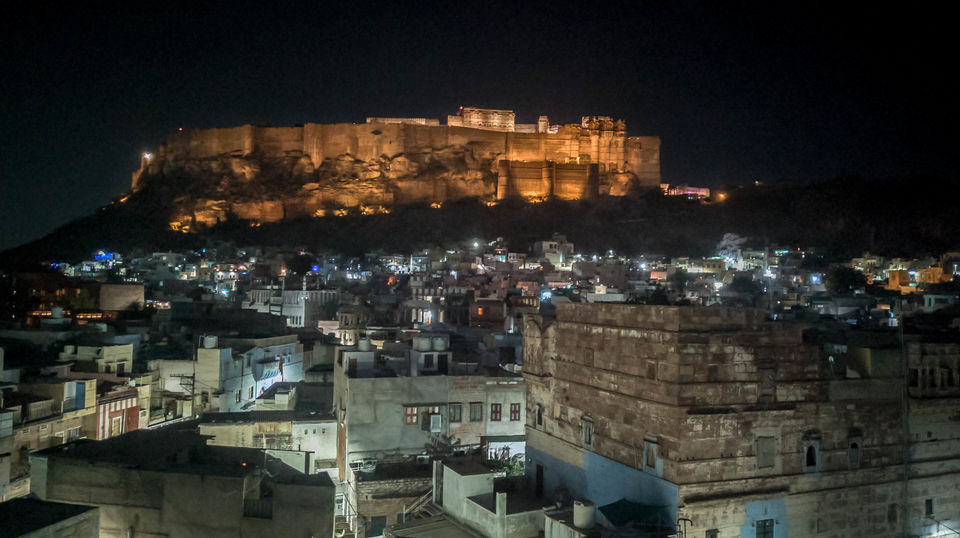
Like I had done almost everyday through the trip until then, I woke up to the dark skies again the next morning. I had bought the ticket to the Blue trail in Rao Jodha Desert Rock Park the earlier day and the guide had asked me to reach the entrance by 6:30am. As much difficult I find to attend meetings in office on time, I had no issues reaching the spot on the designated time in spite of having to ride 3km in the bone chilling Rajasthan cold. The guide took me to the spot that includes a 10min climb up the hill which wouldn’t be a problem for most. The effort was all worth it though.
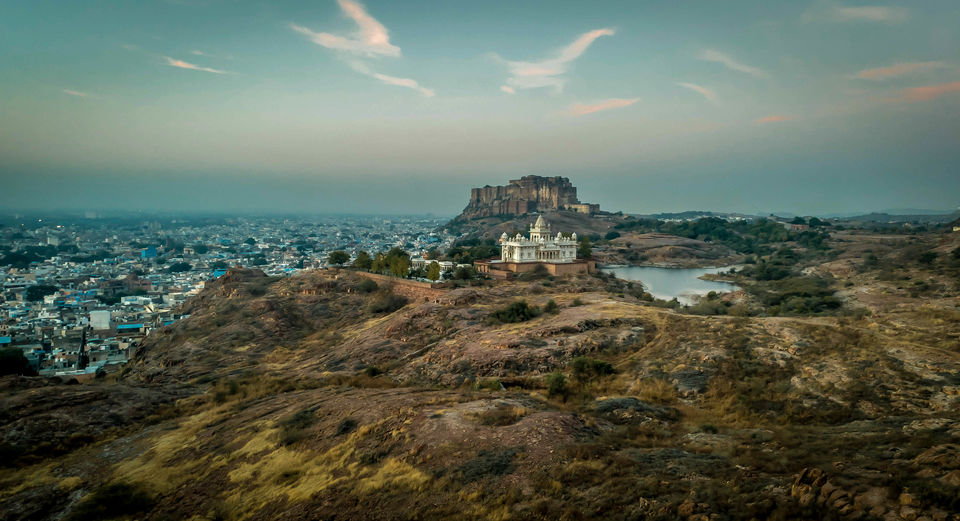
The view is magical as the red sandstone walls of the fort glitter in the distance under the first rays of the sun falling on them. From the spot, the fort literally appears like it is looking over the city like a guardian. The all-white Jaswant Thada in the foreground offers a great contrast with the Devkund Lake accompanying next to it.
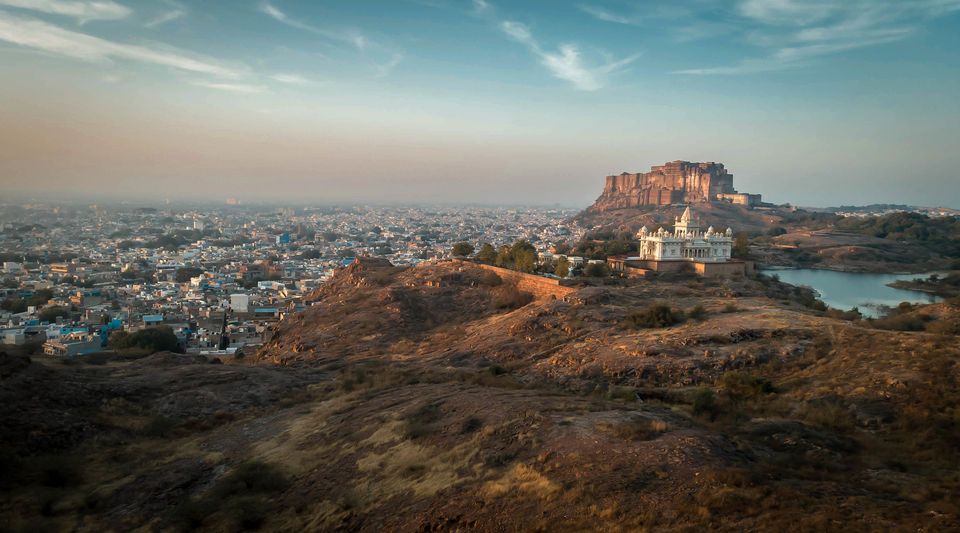
Half an hour after the sunrise, I returned as I had to prepare to leave Jodhpur for the next destination. But not before treating myself to a breakfast of Aloo parathas which had become a standard during the trip. With my heart and my stomach both content, I left Jodhpur with some great memories and photographs with Google maps locked onto Jaisalmer next.
Read my earlier blog on Udaipur here.

